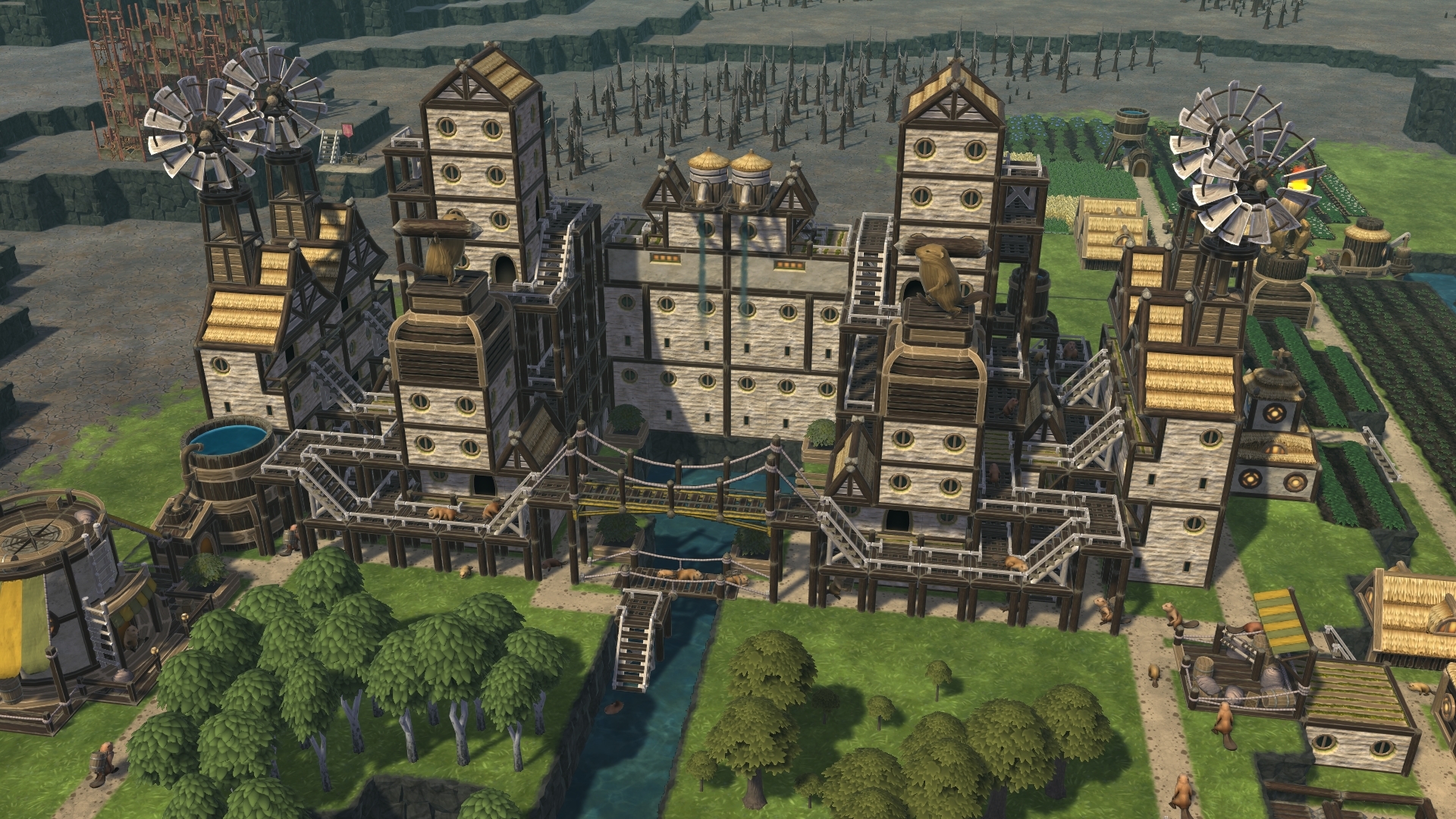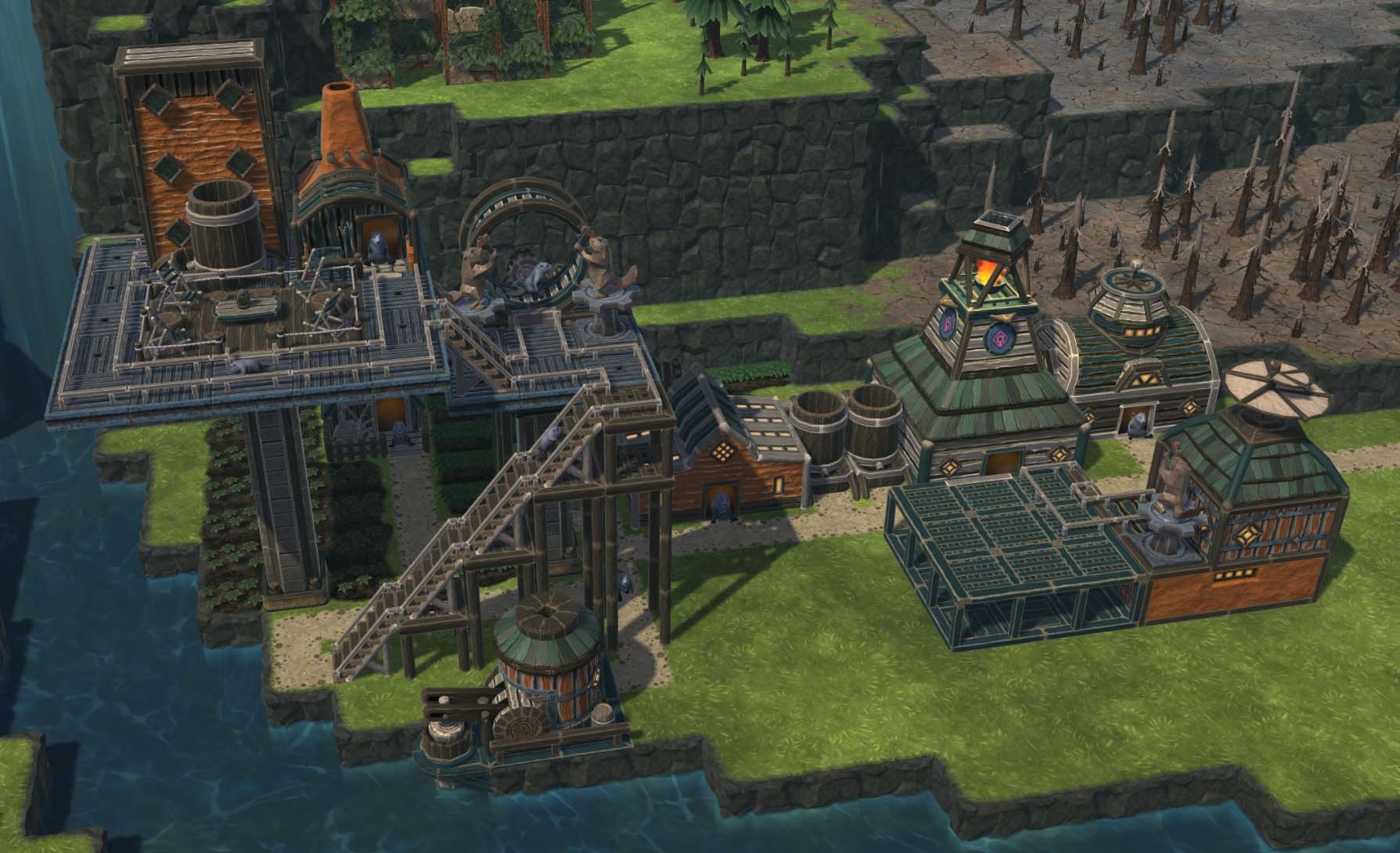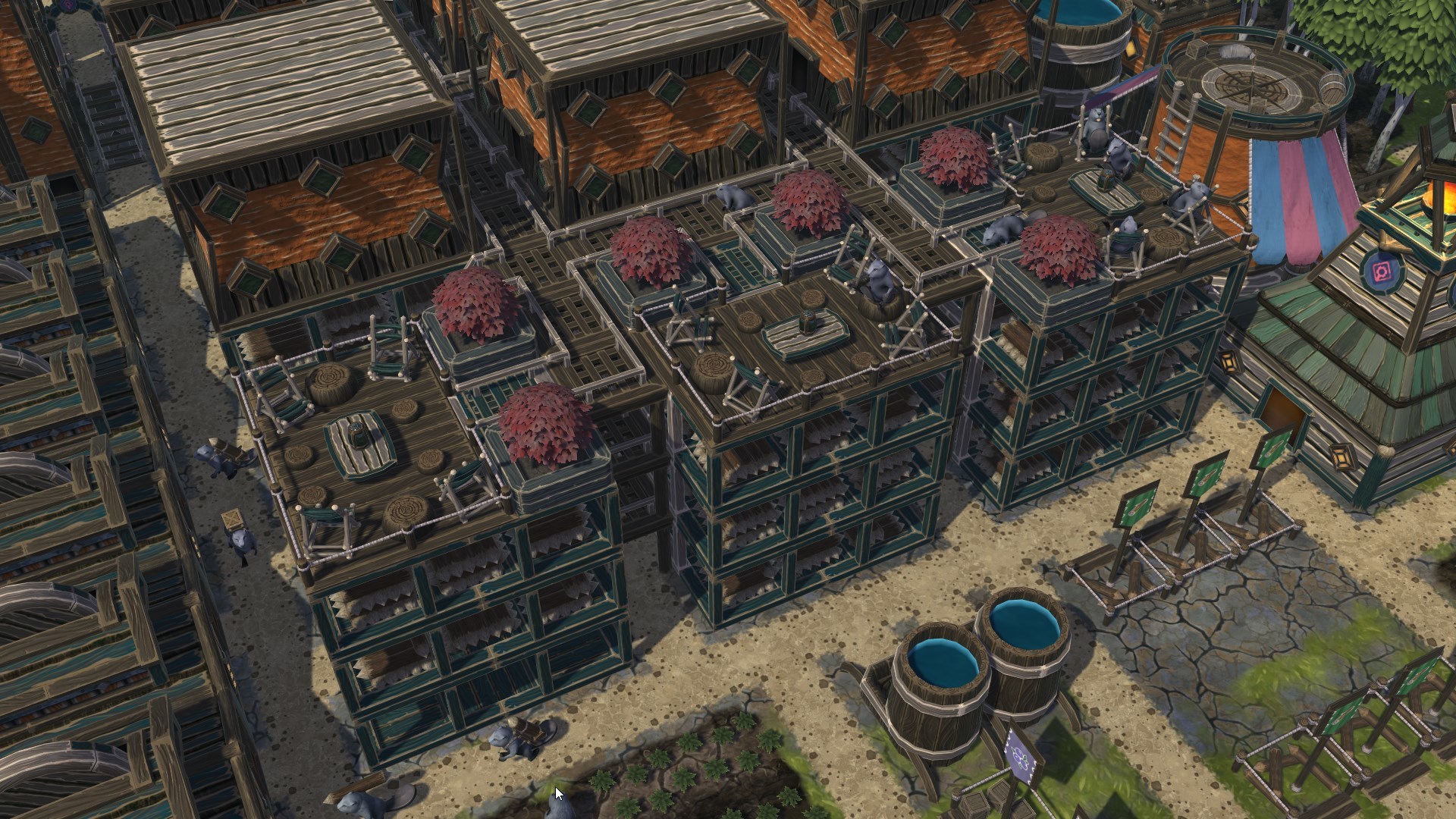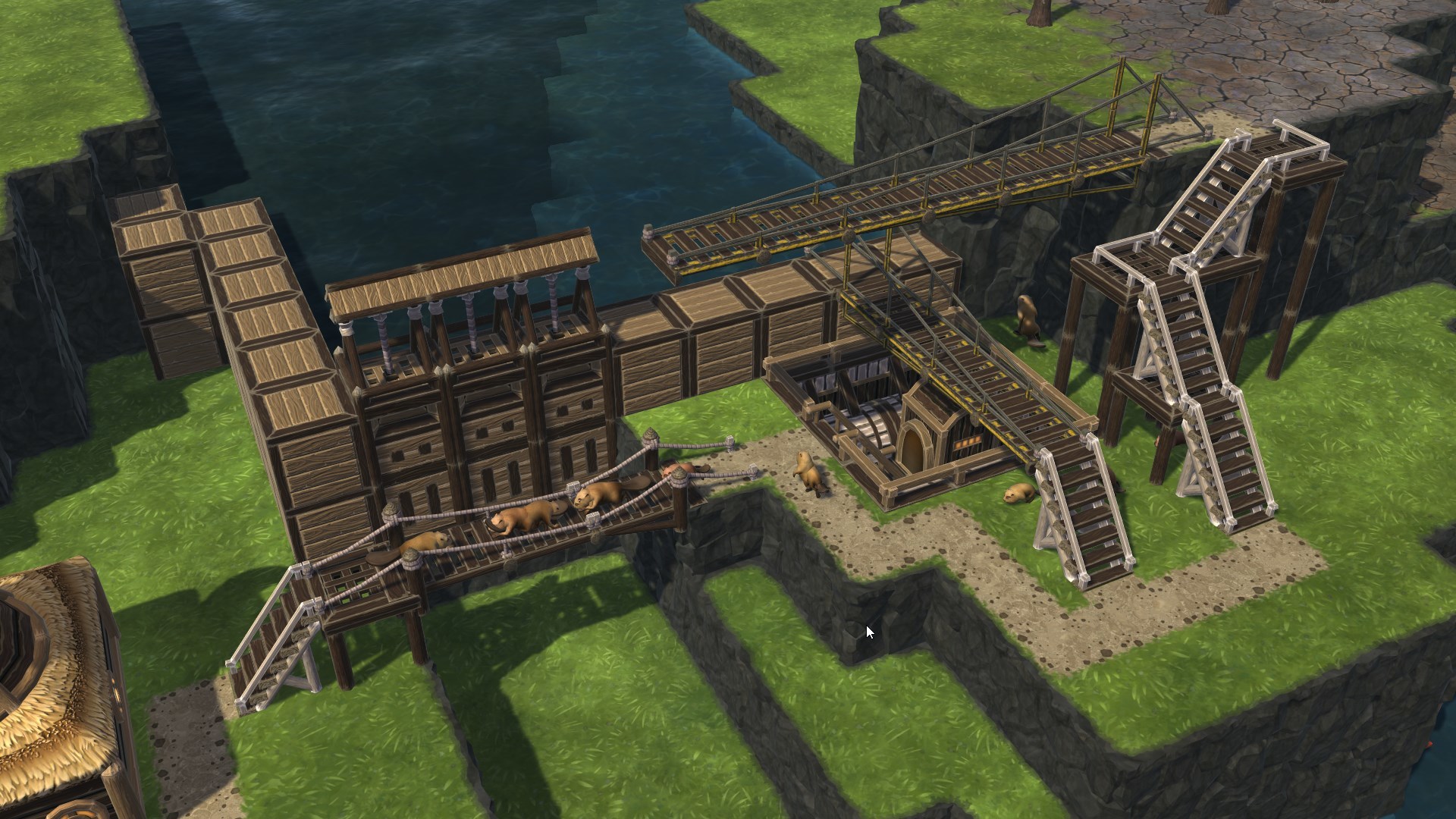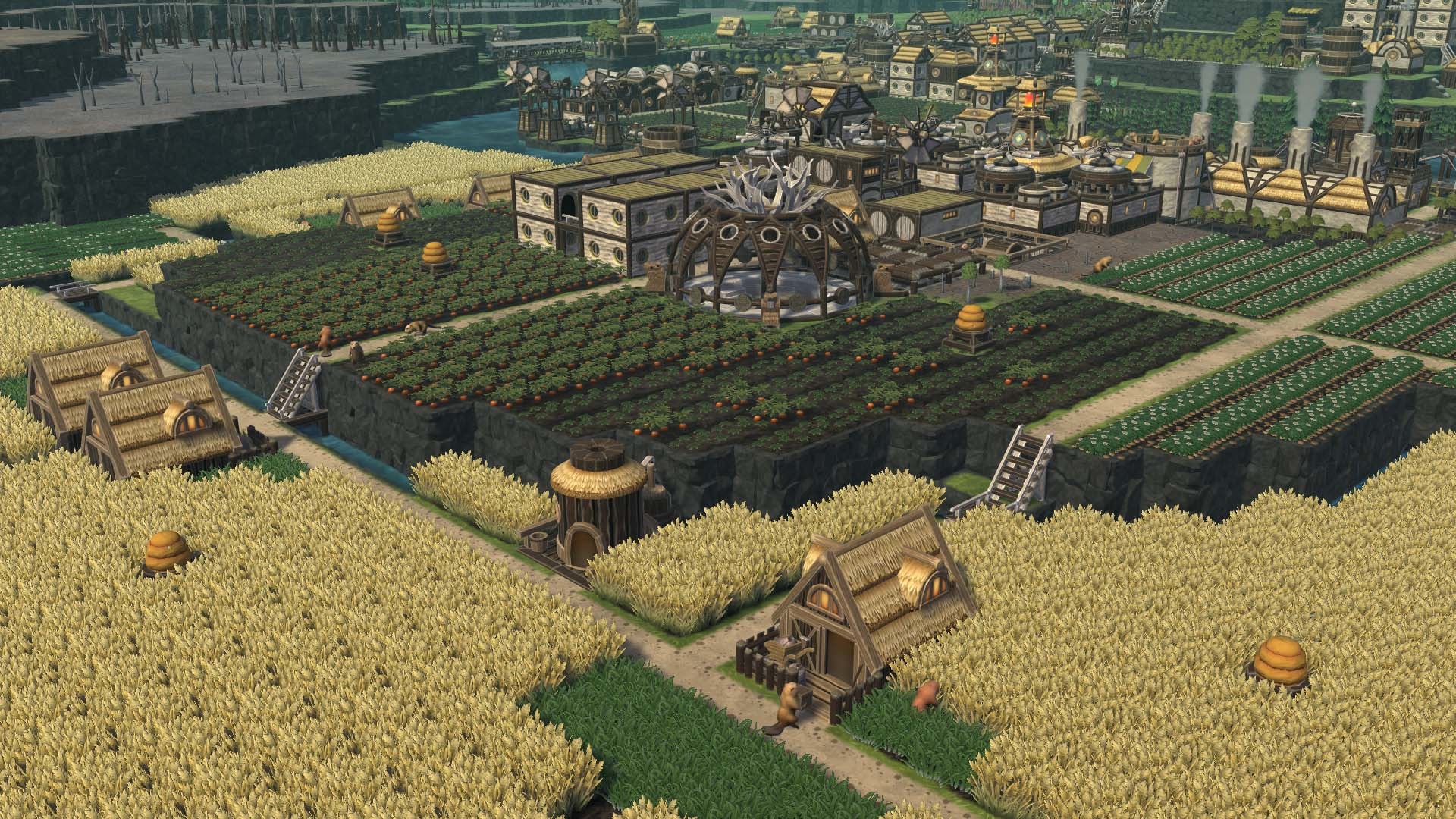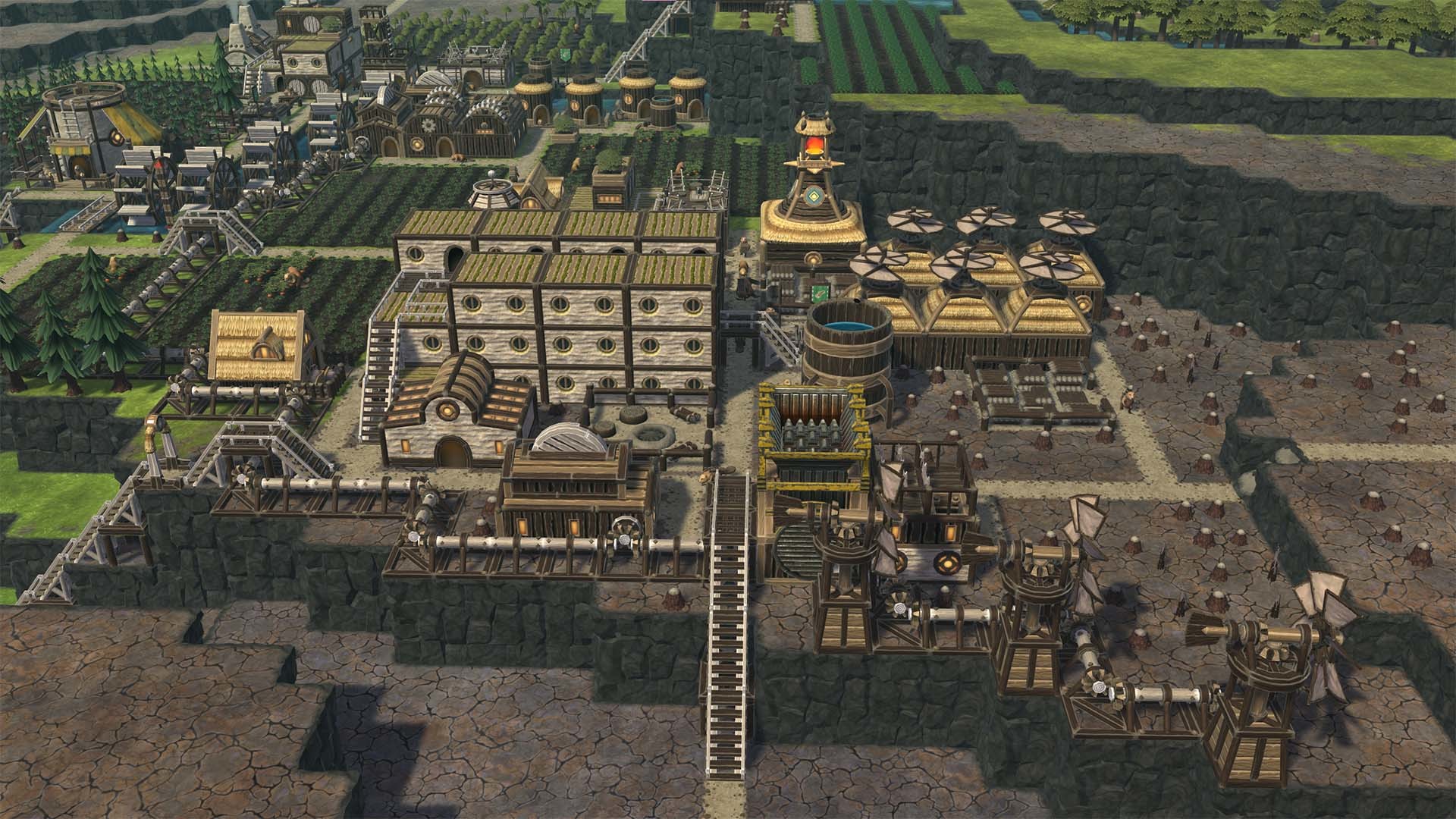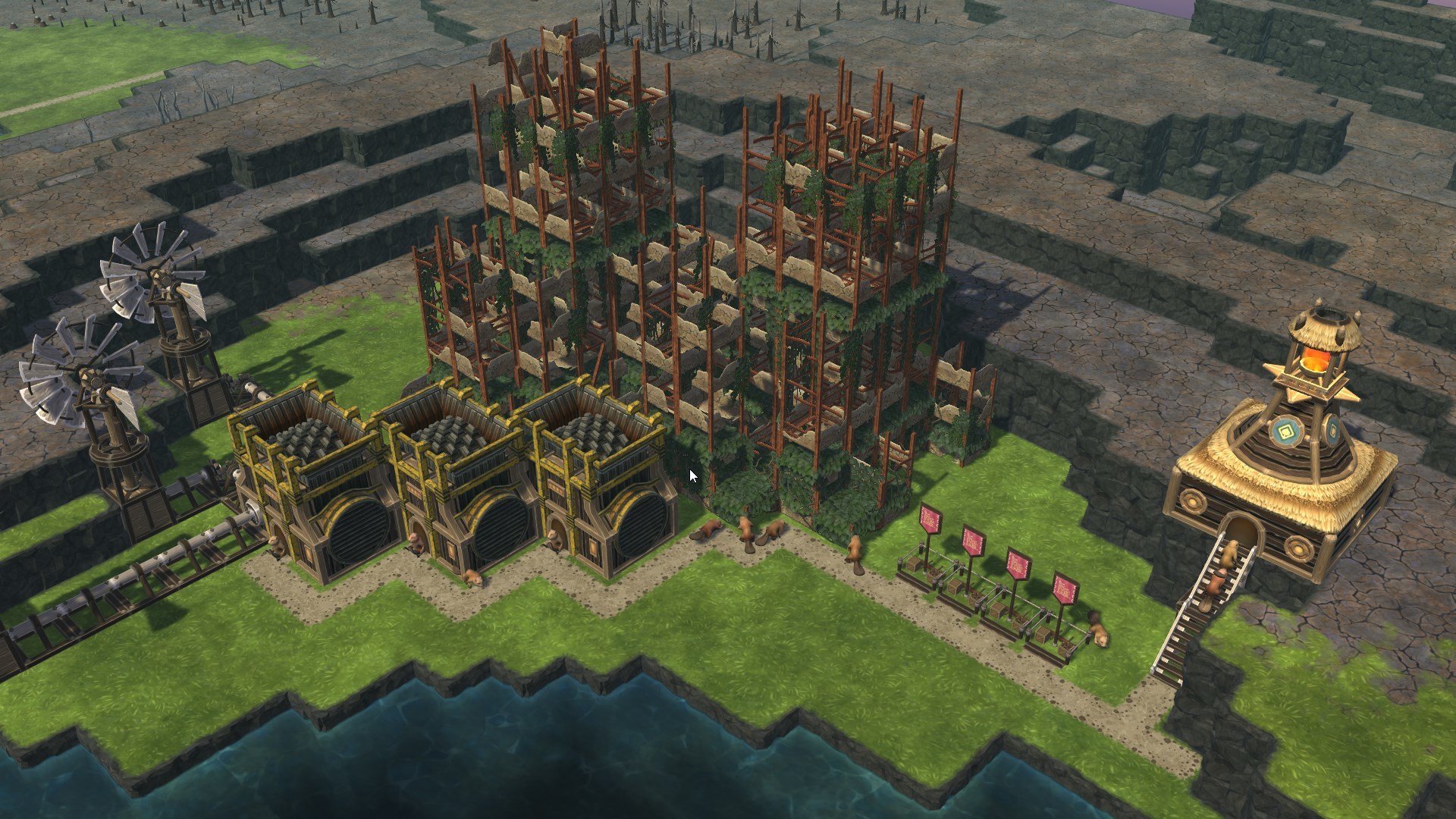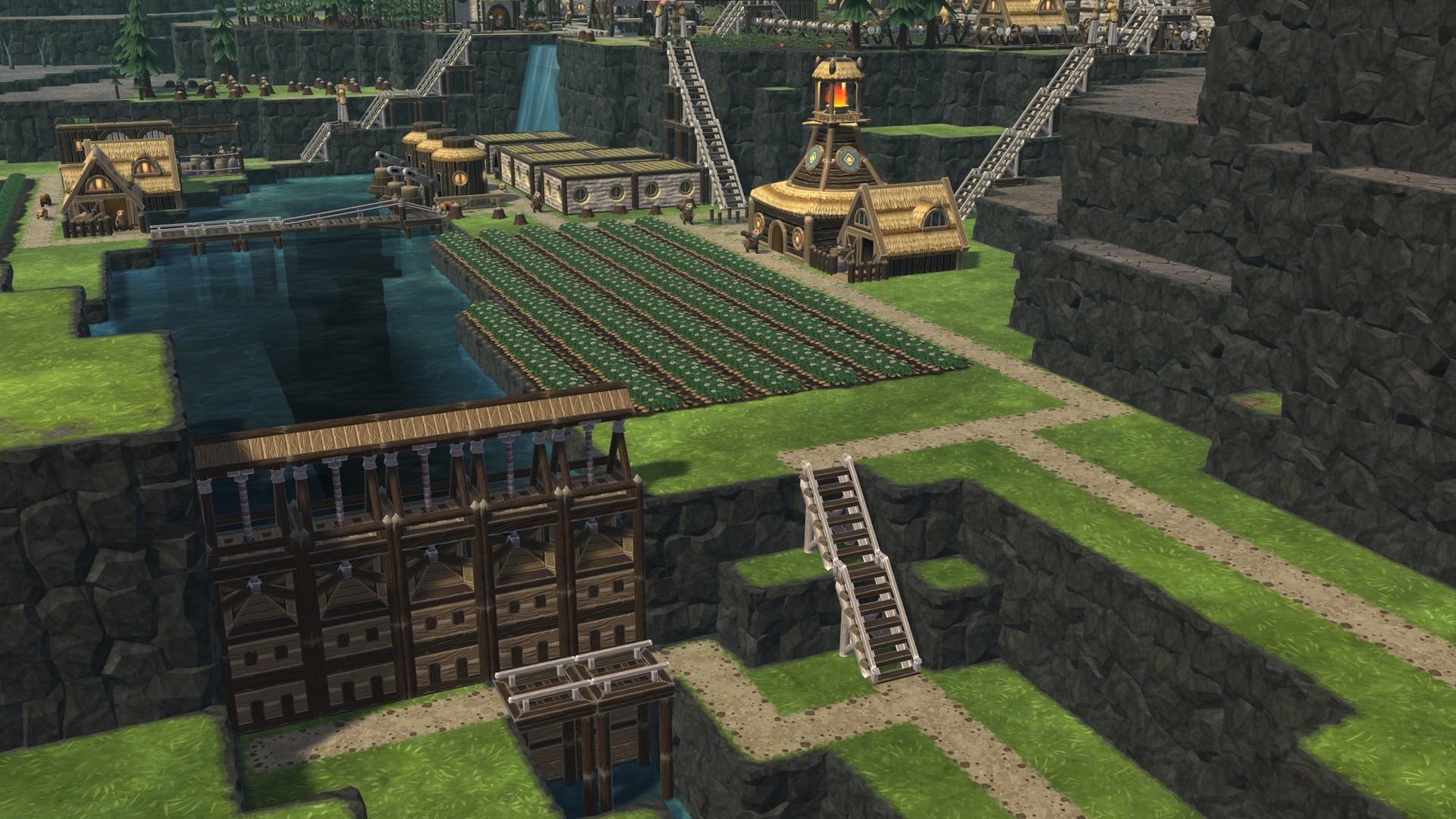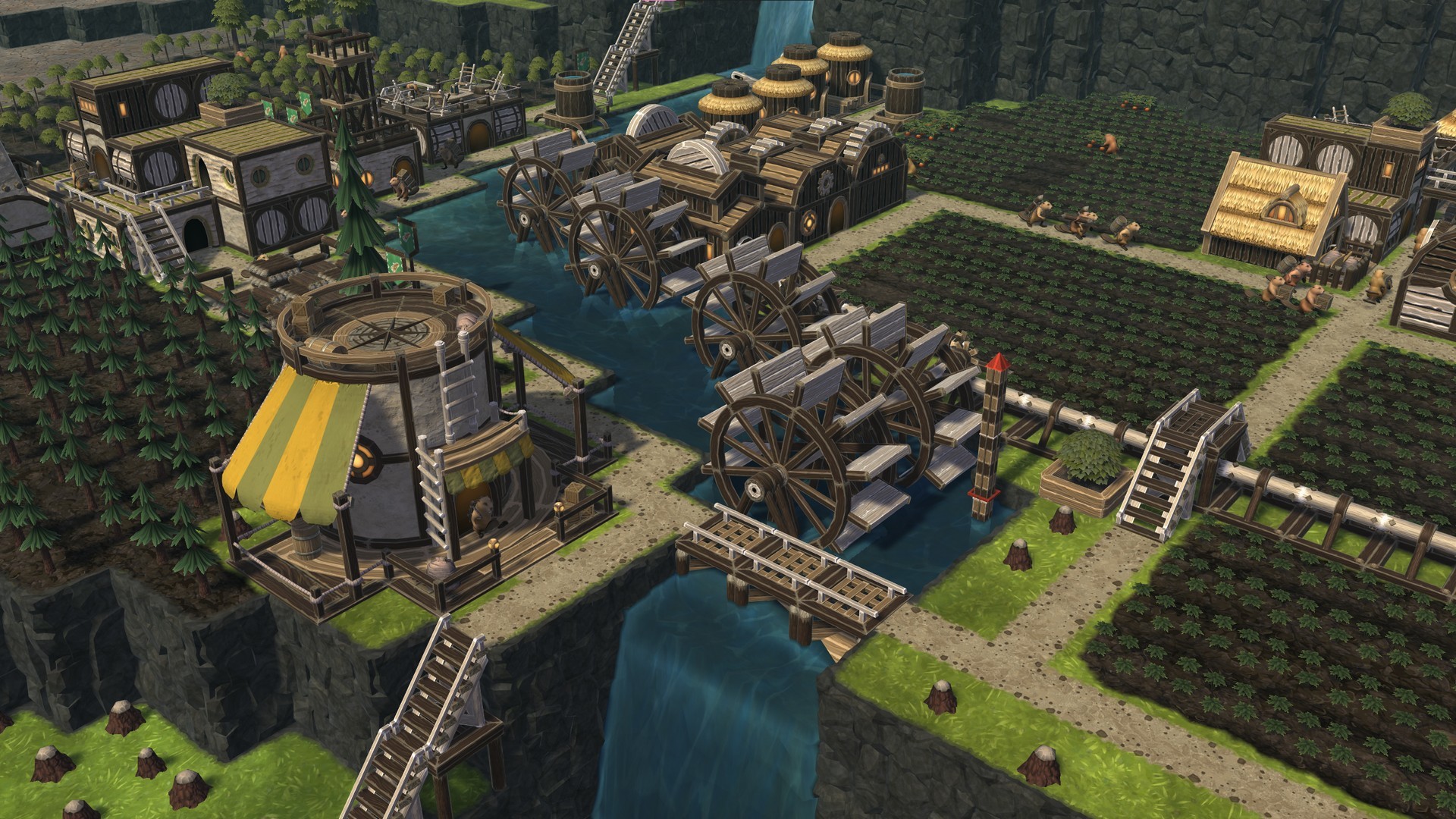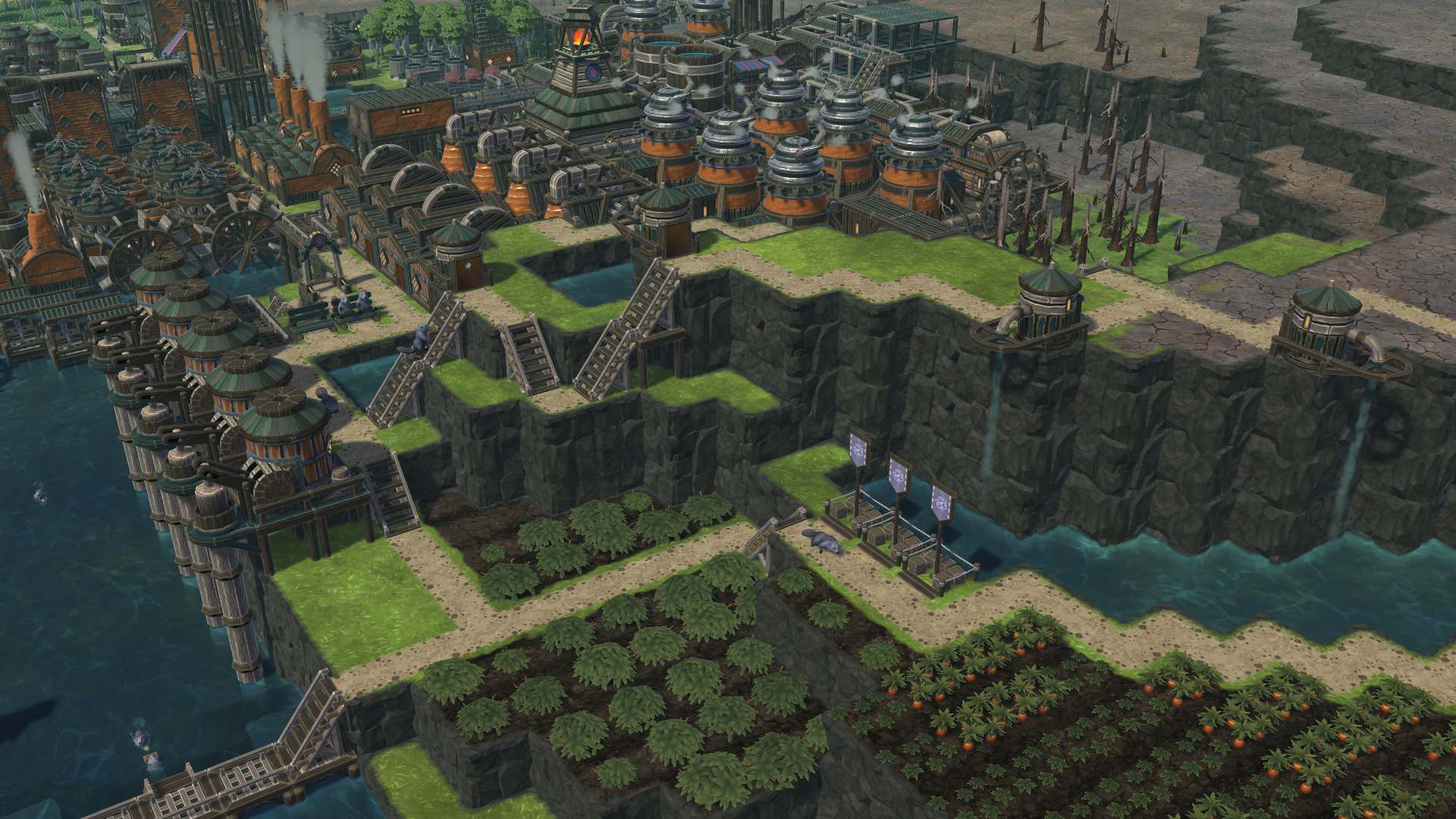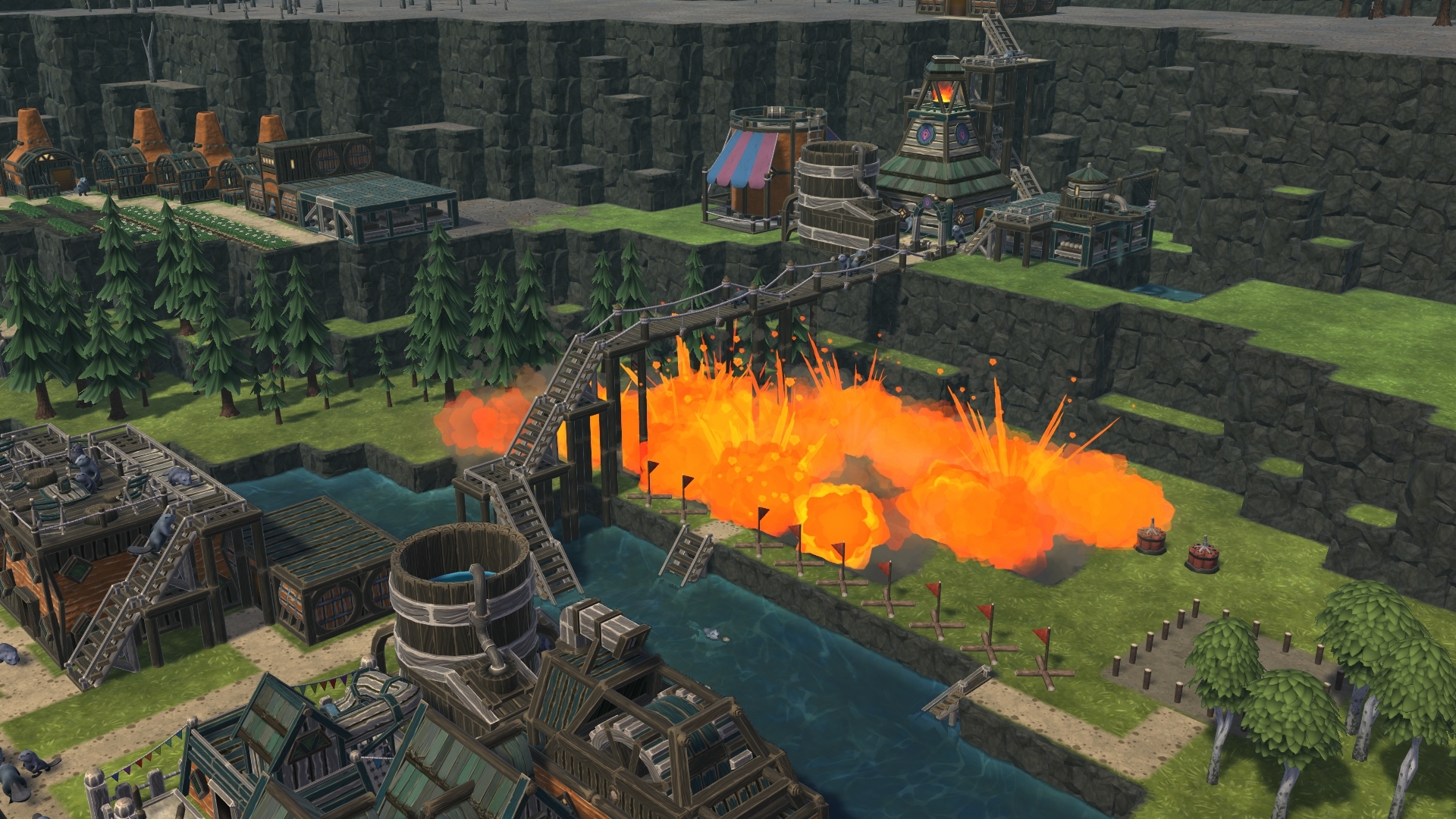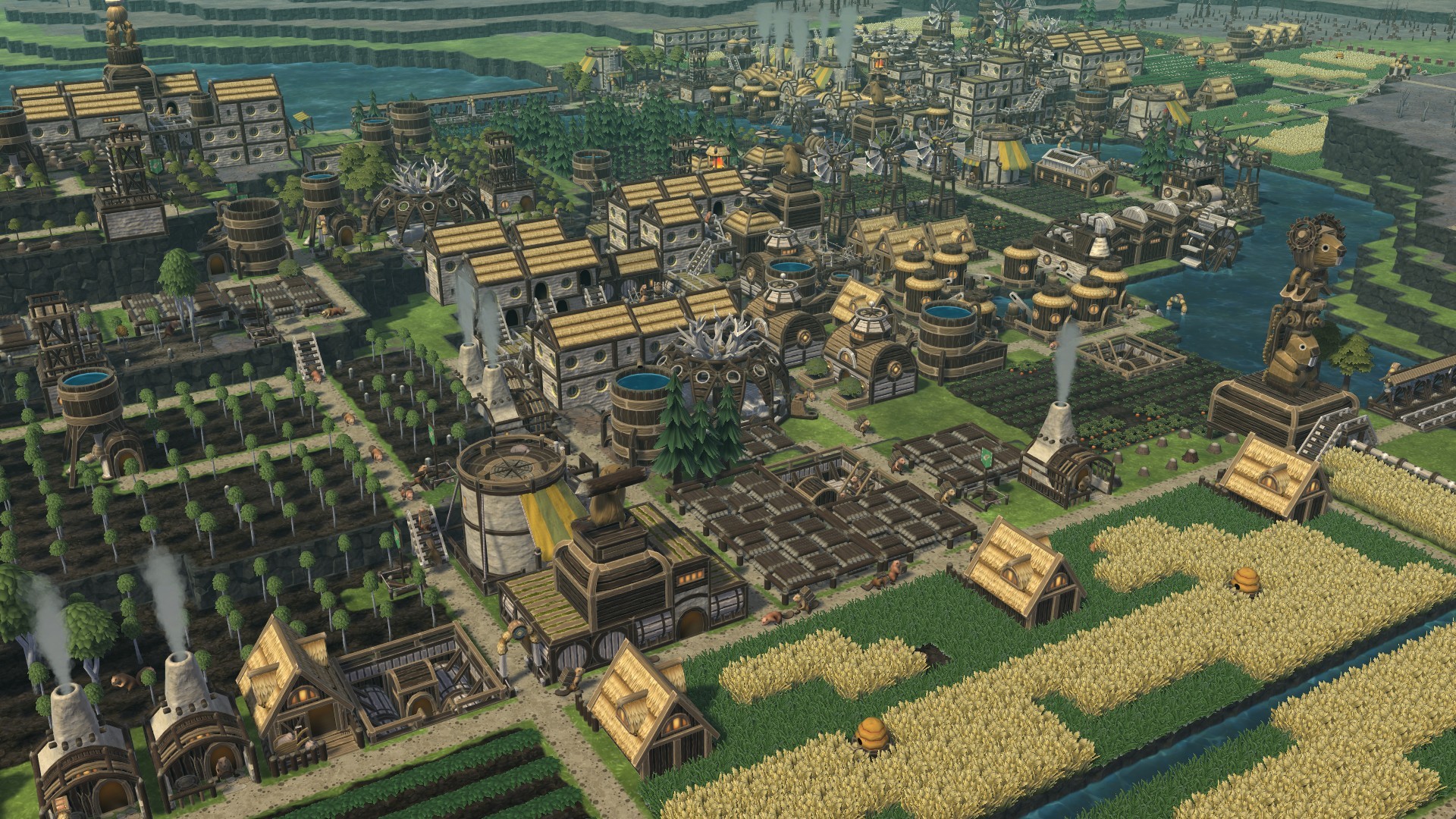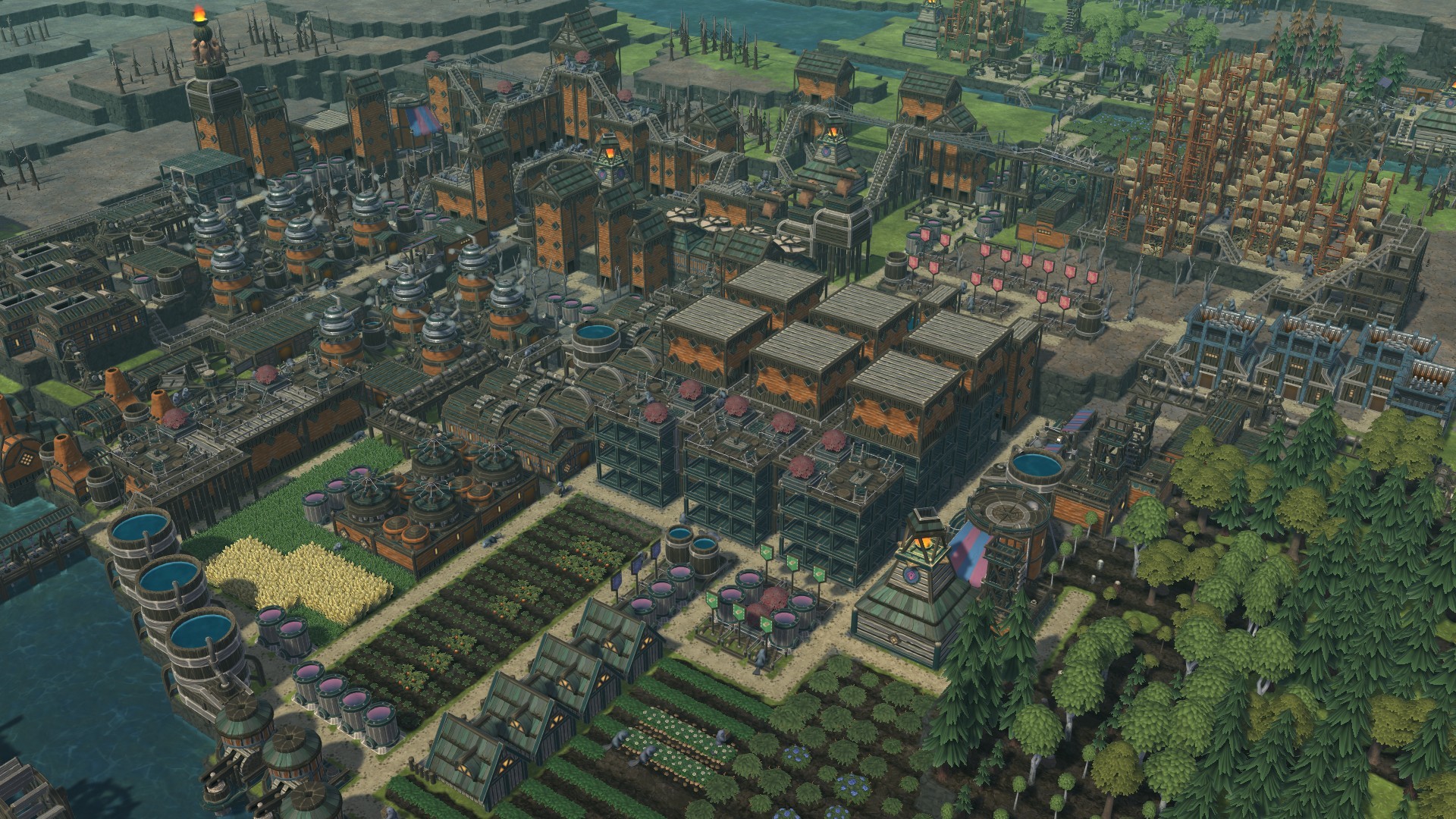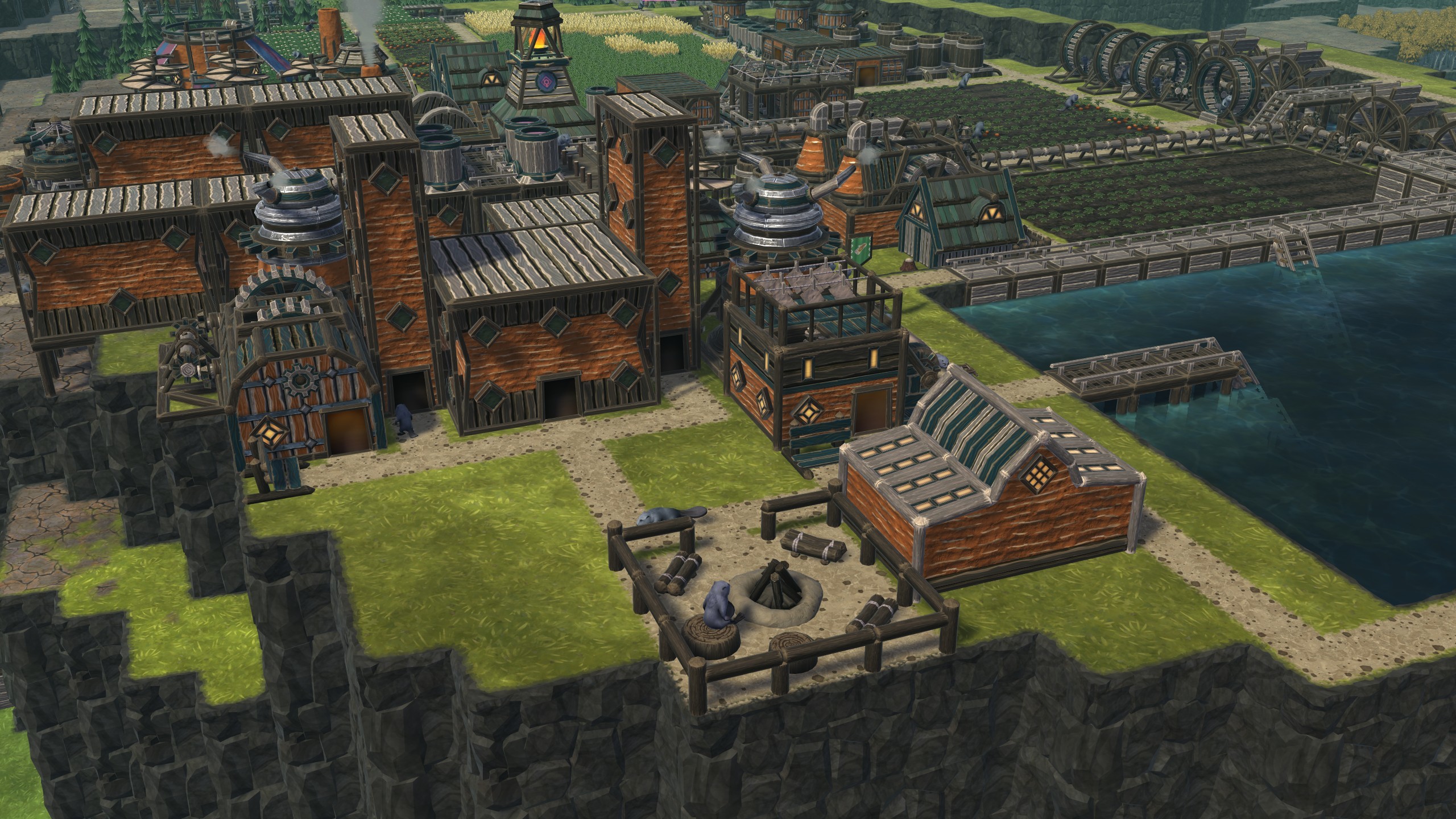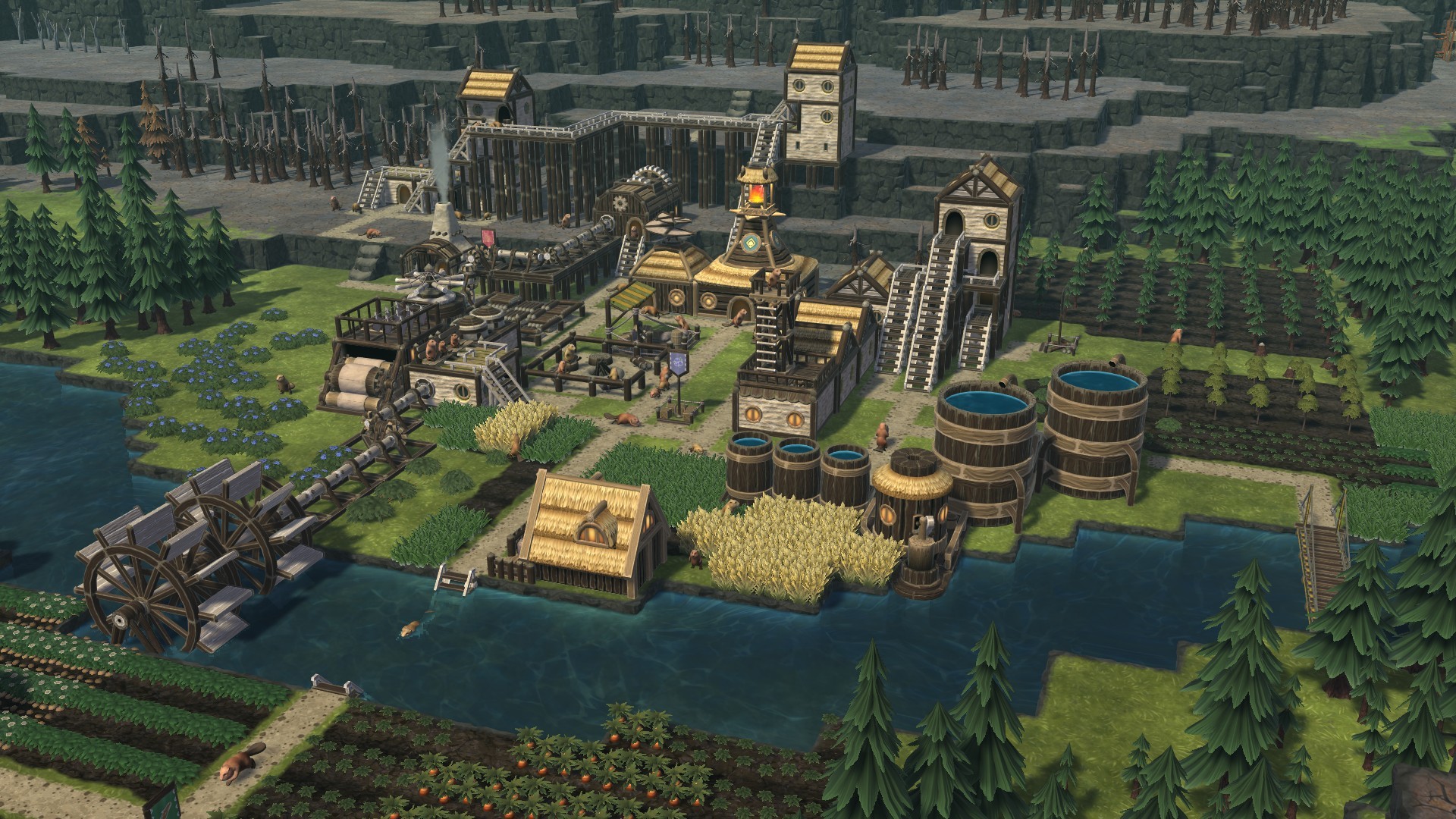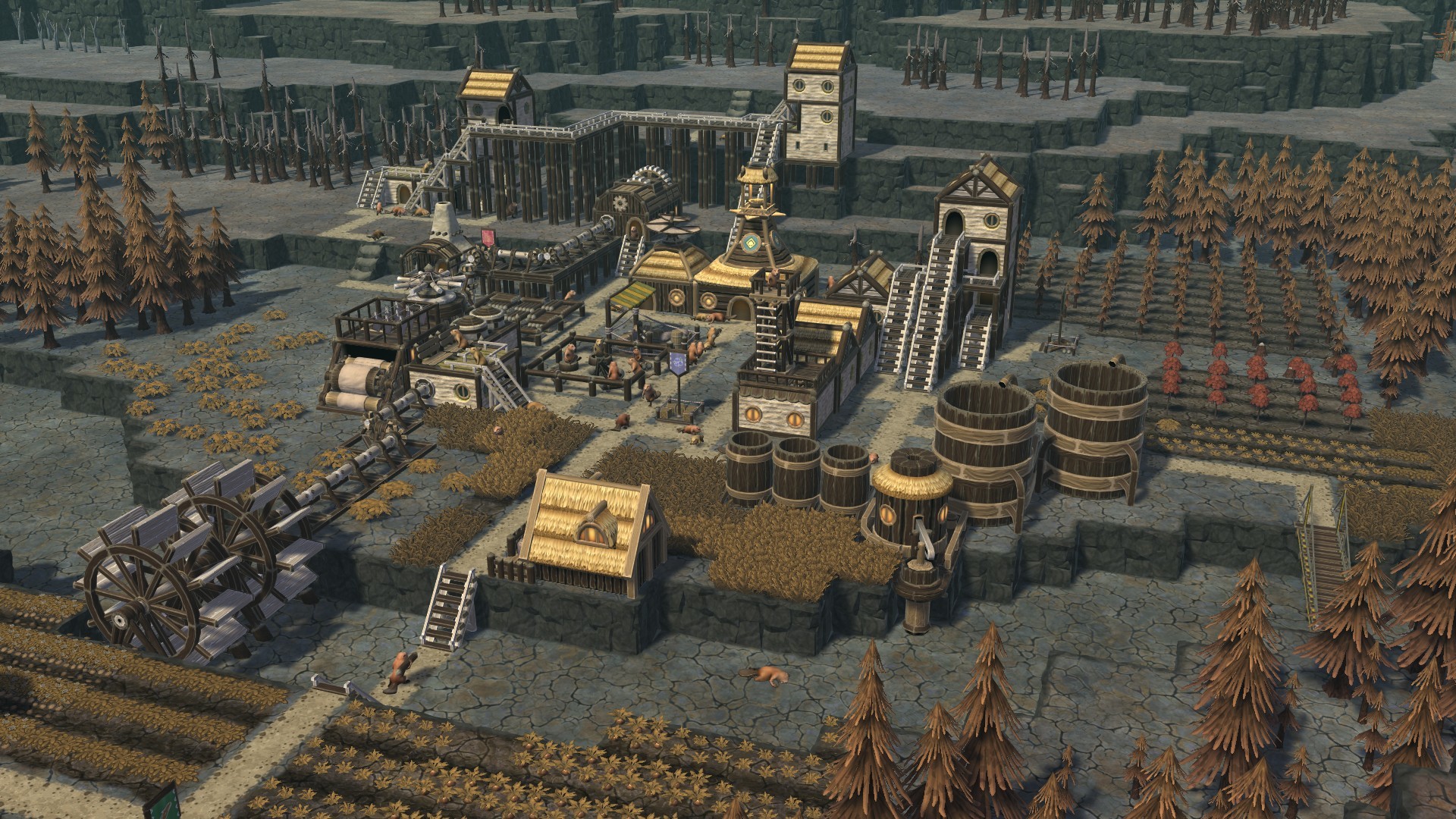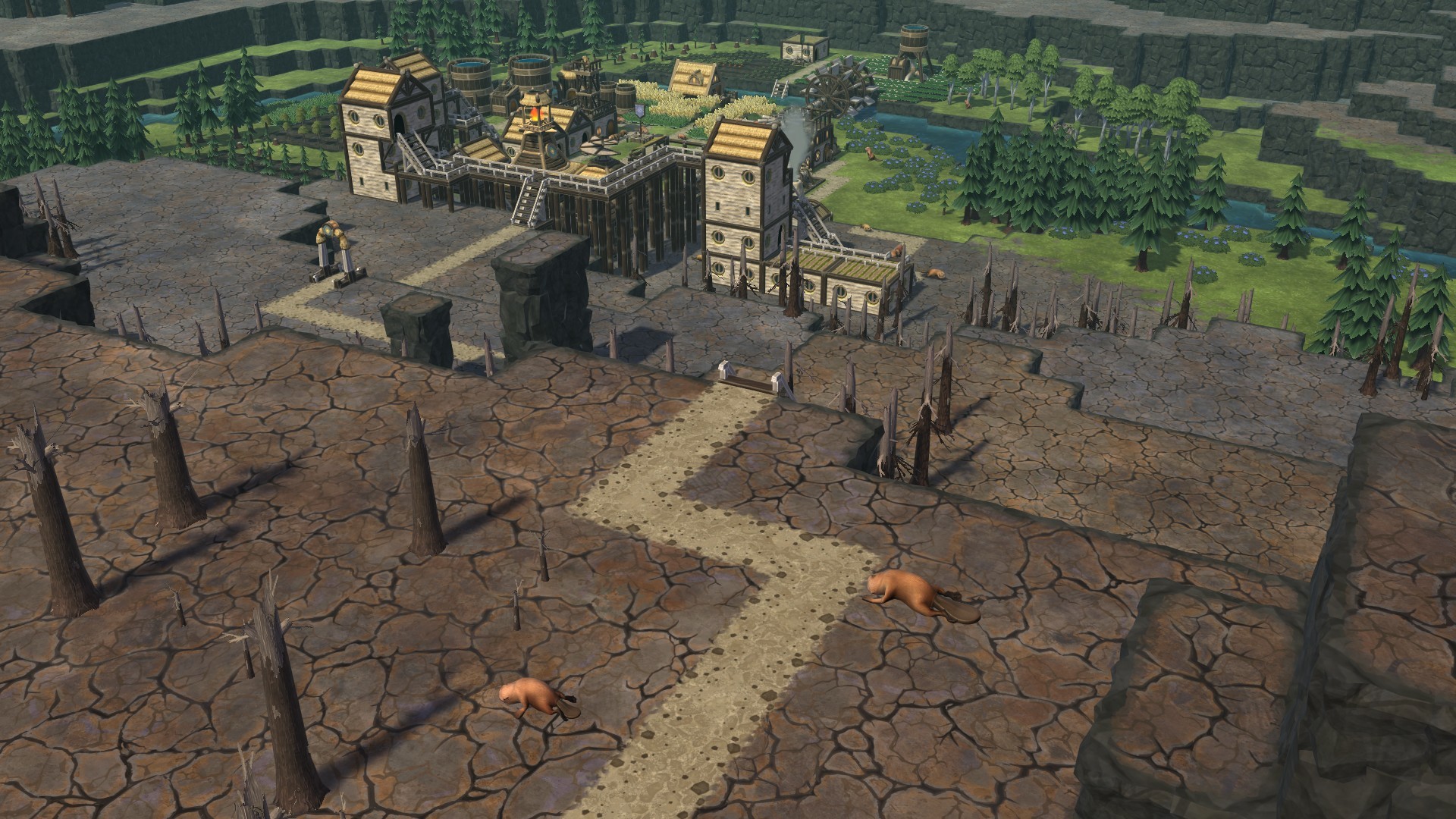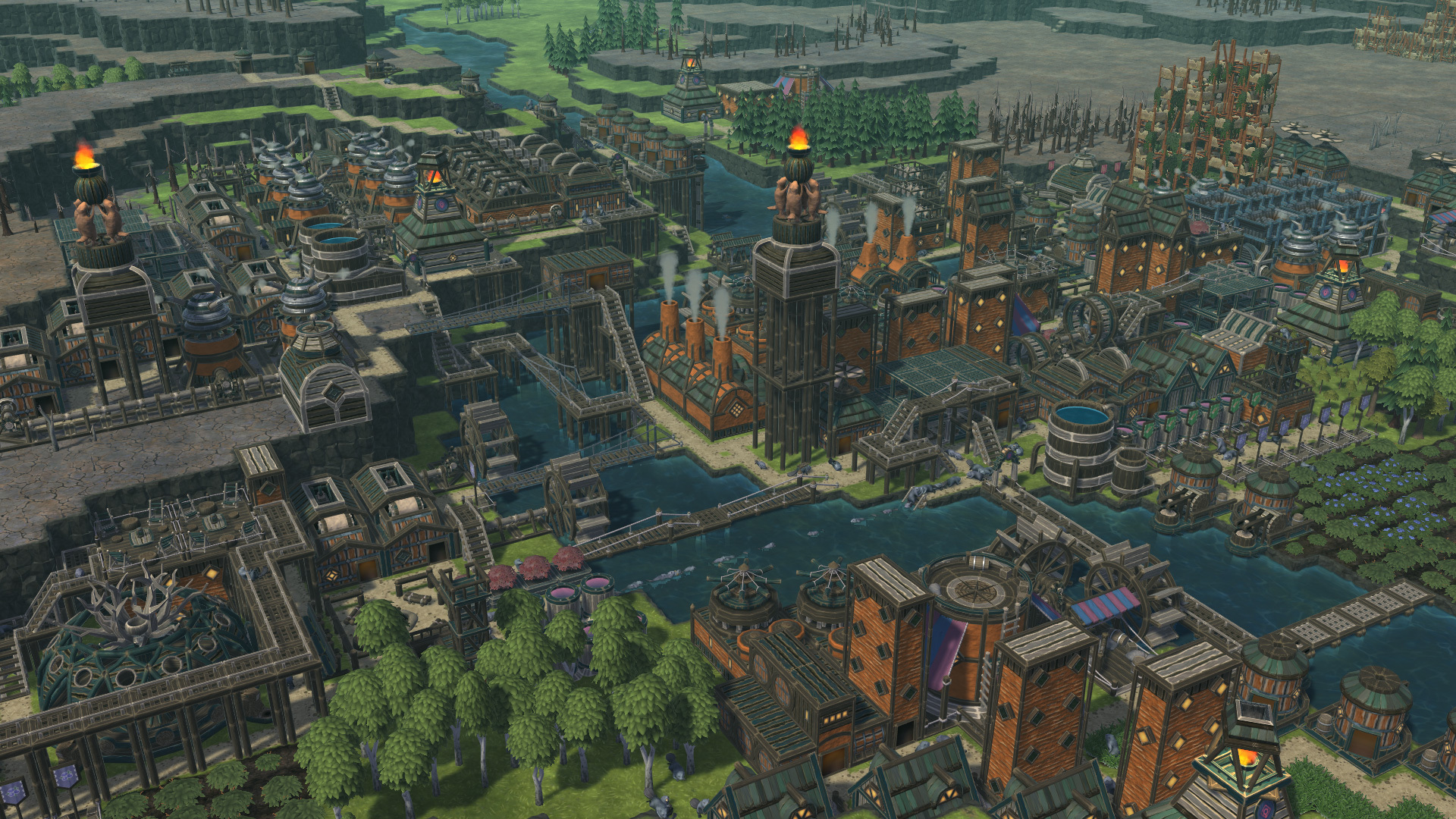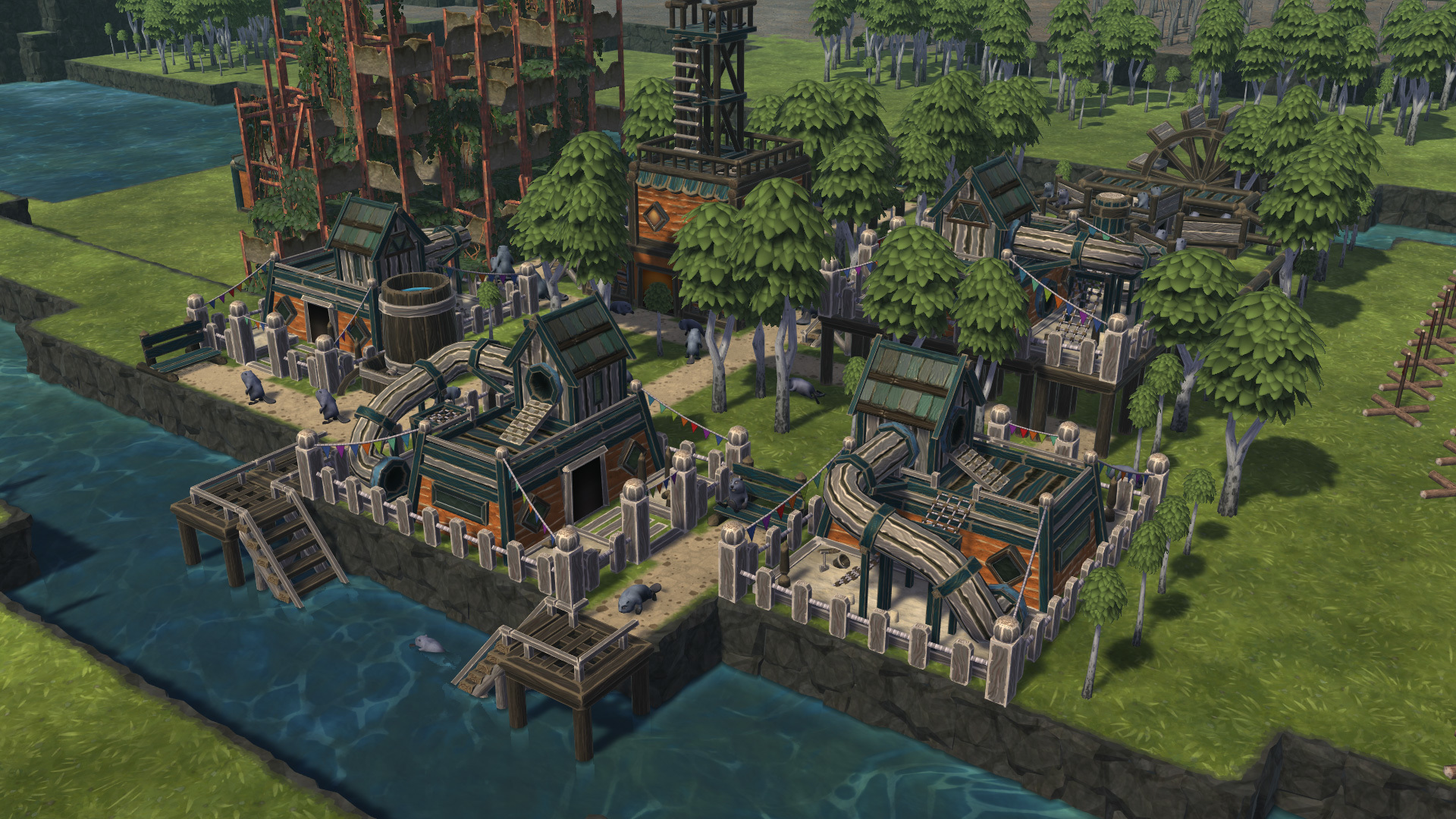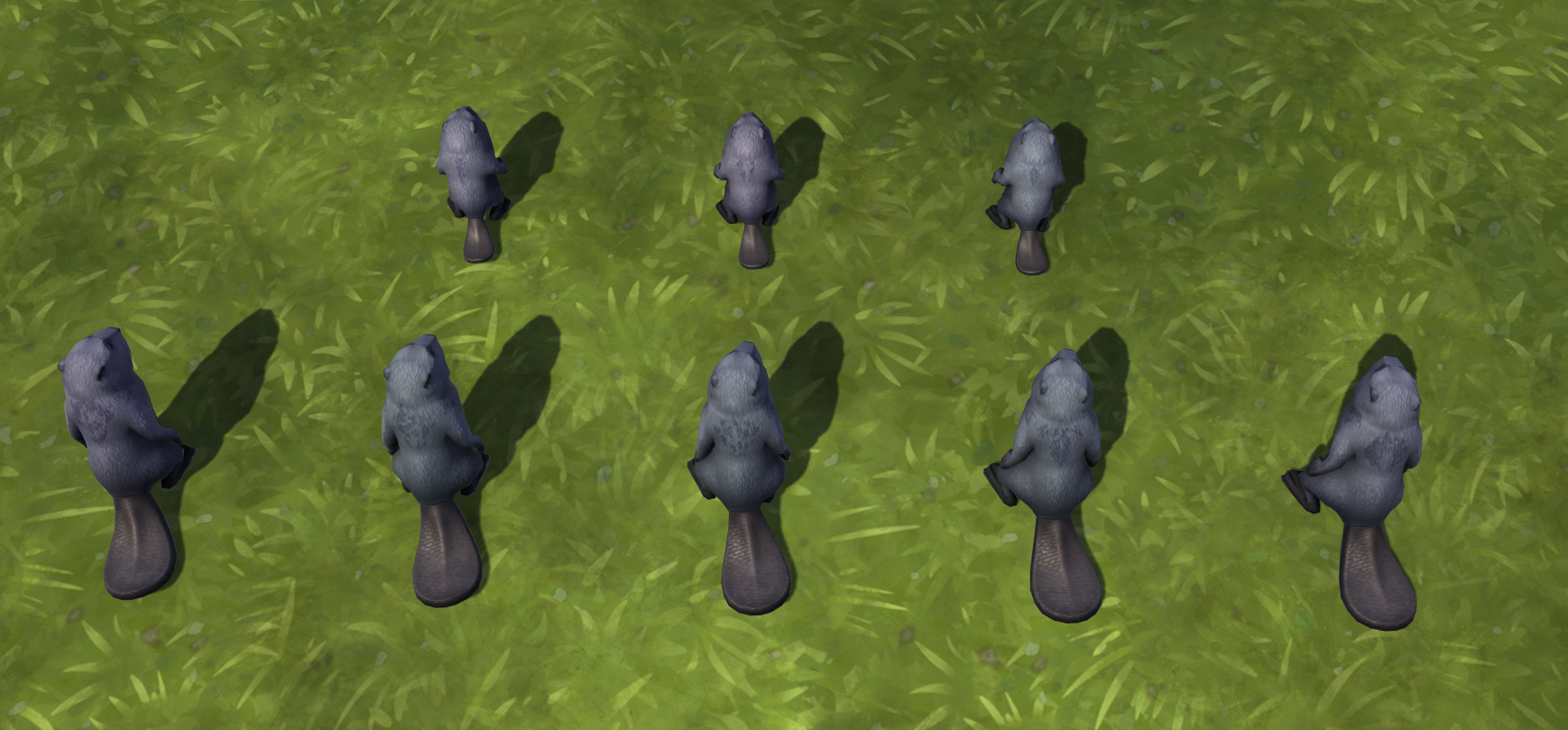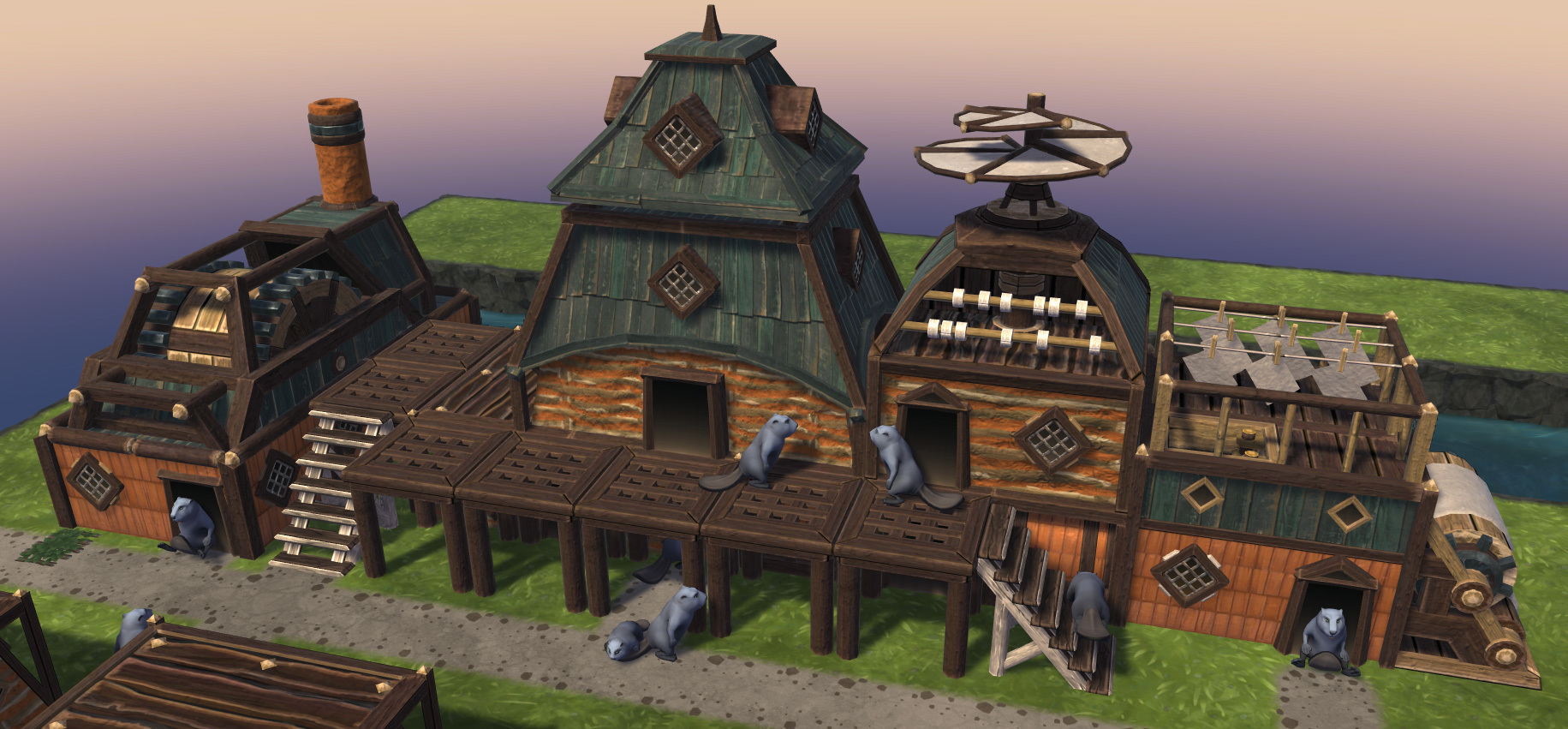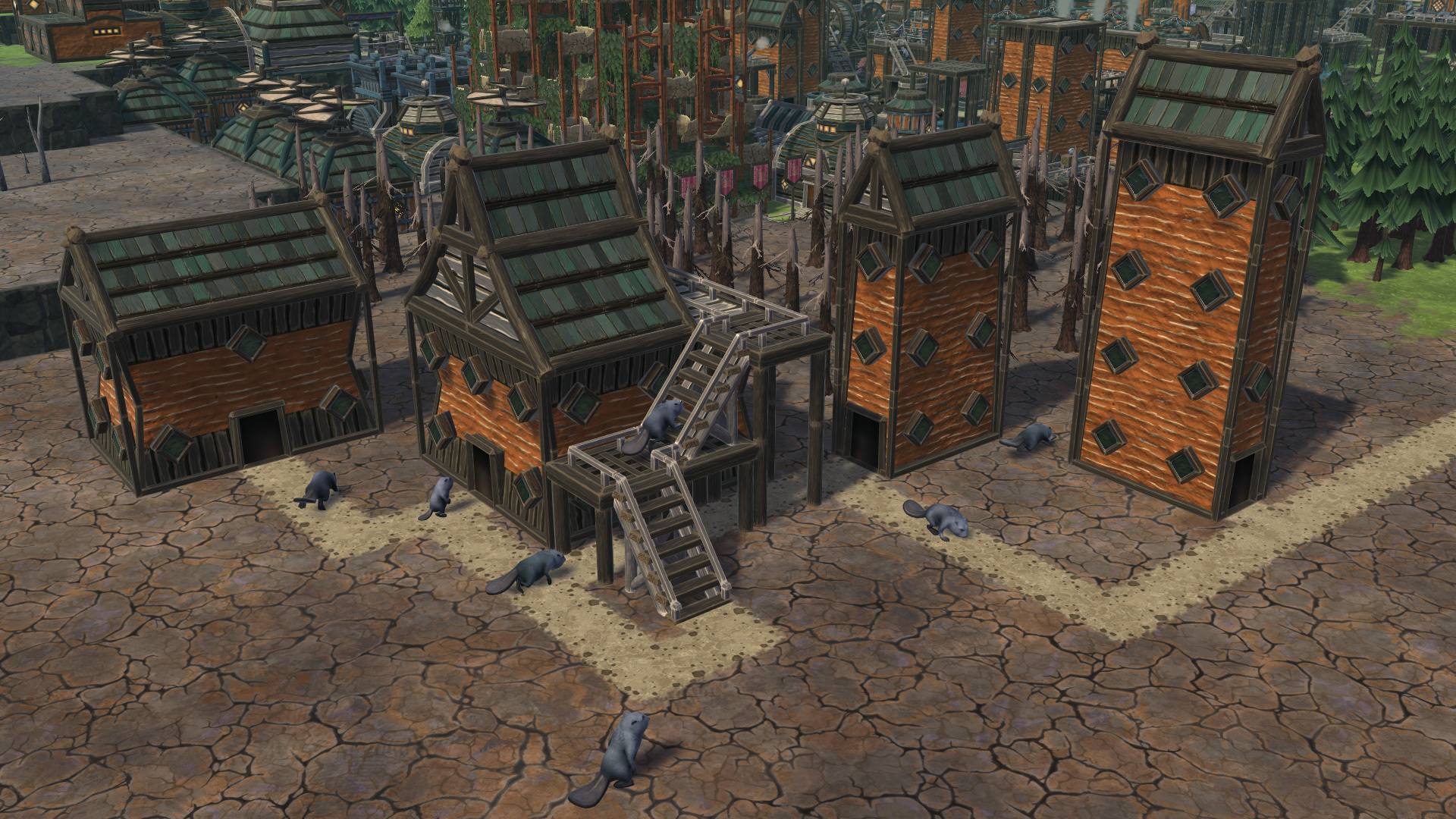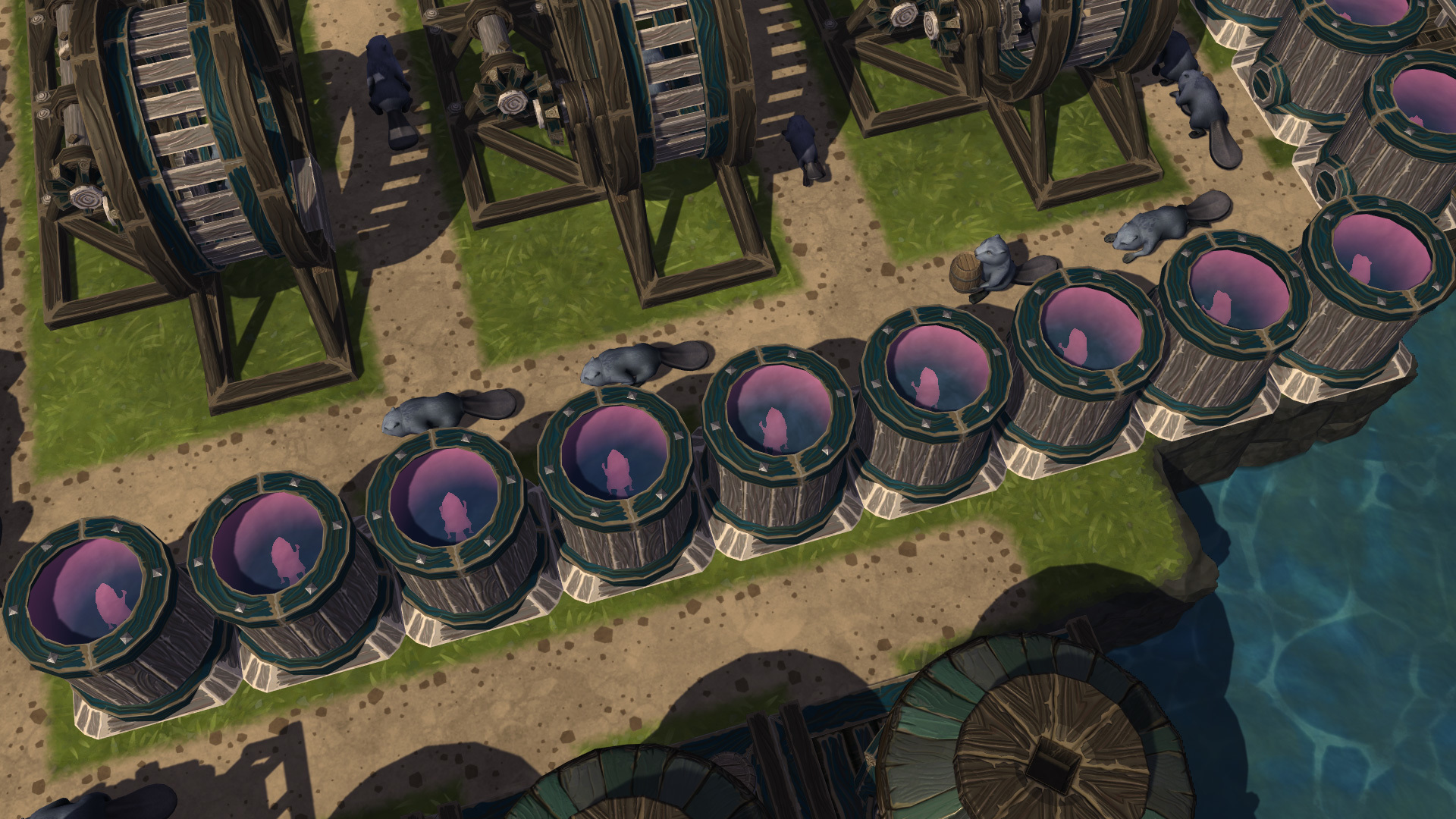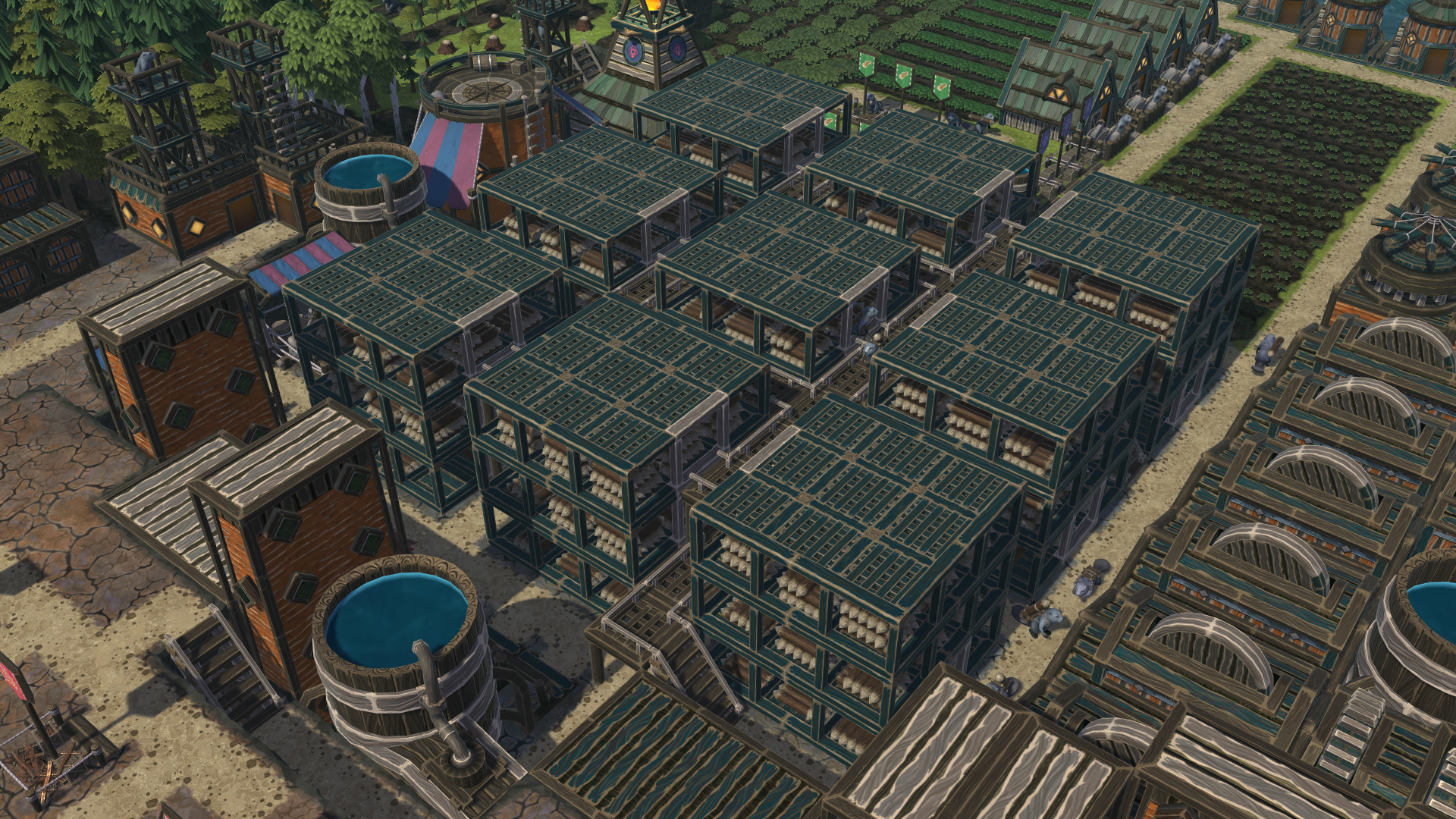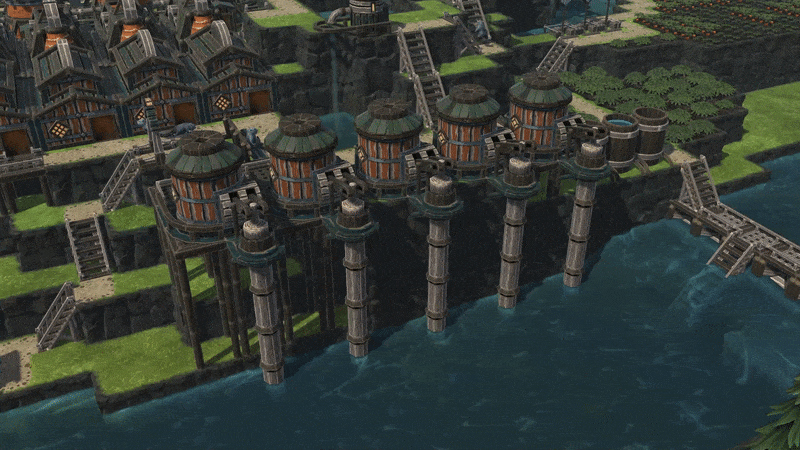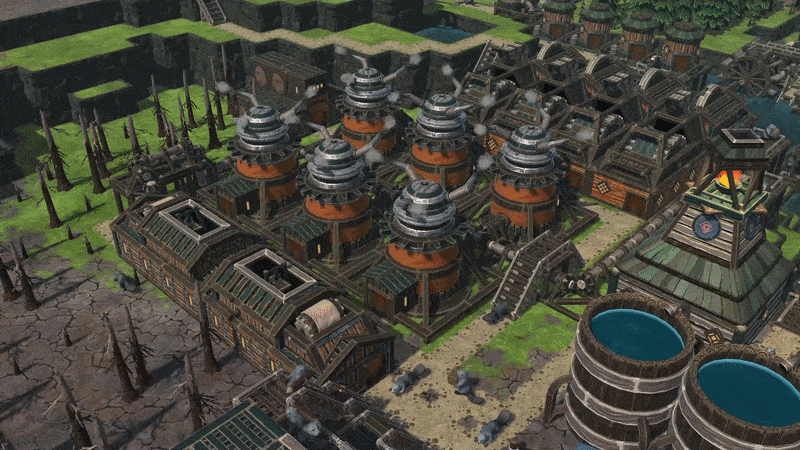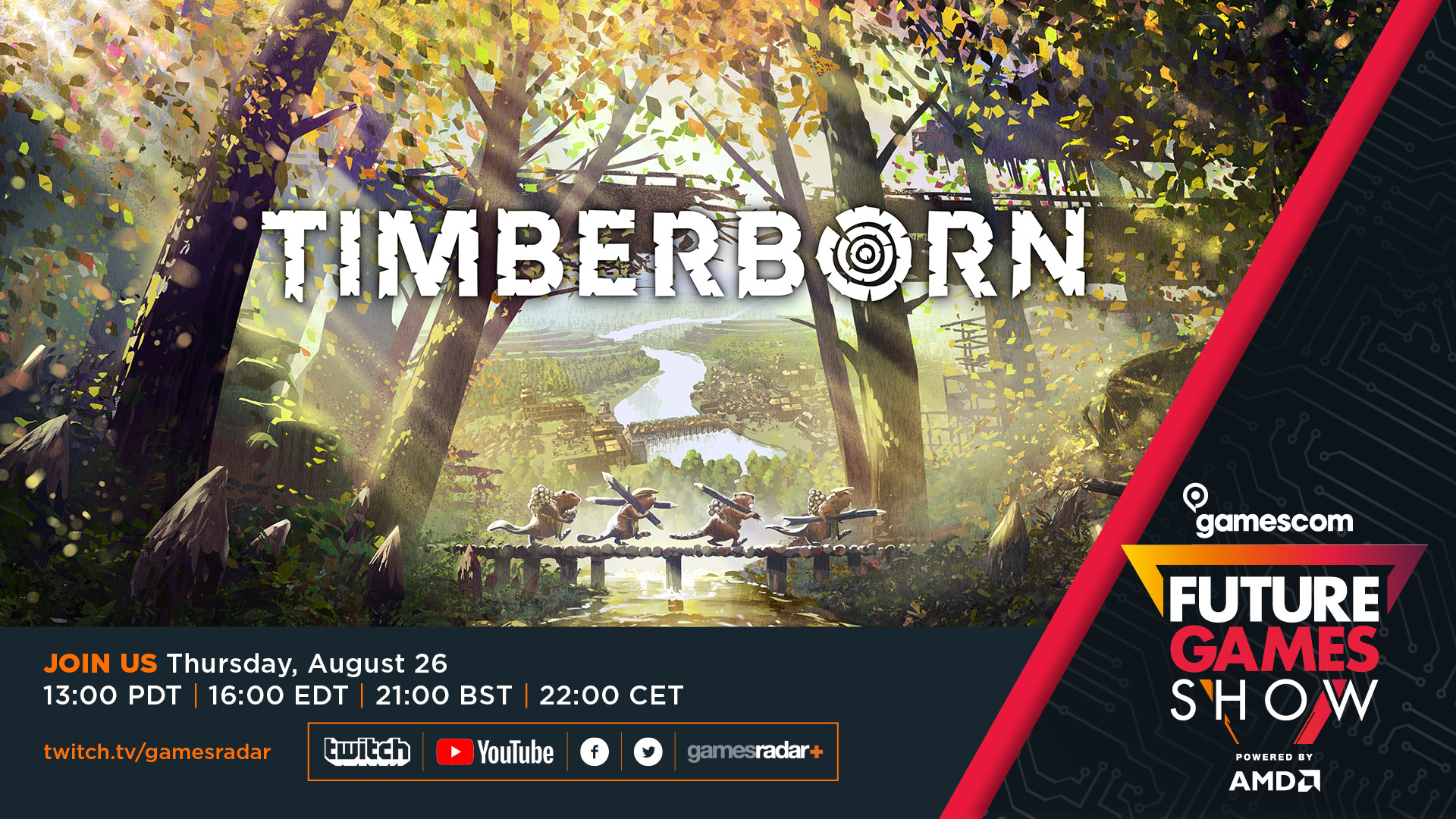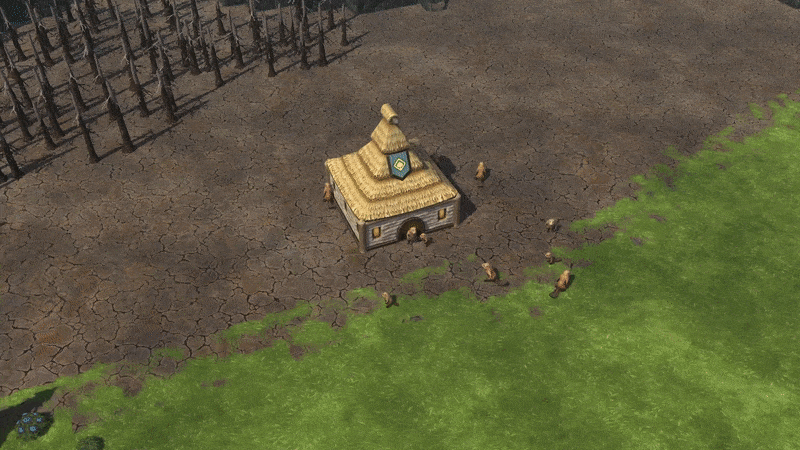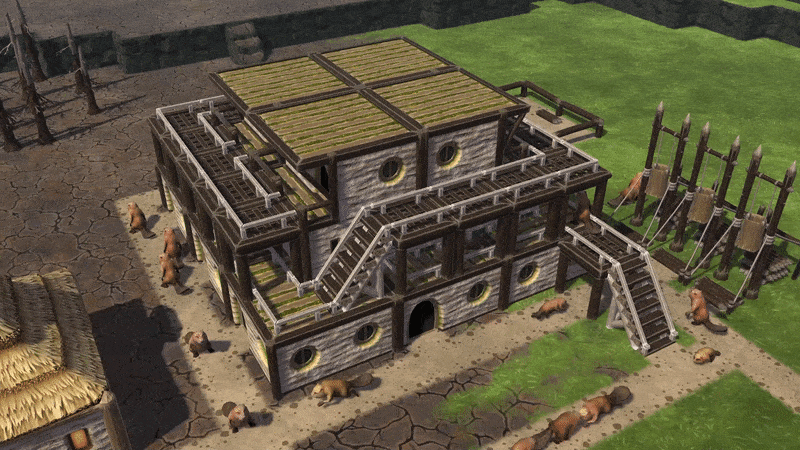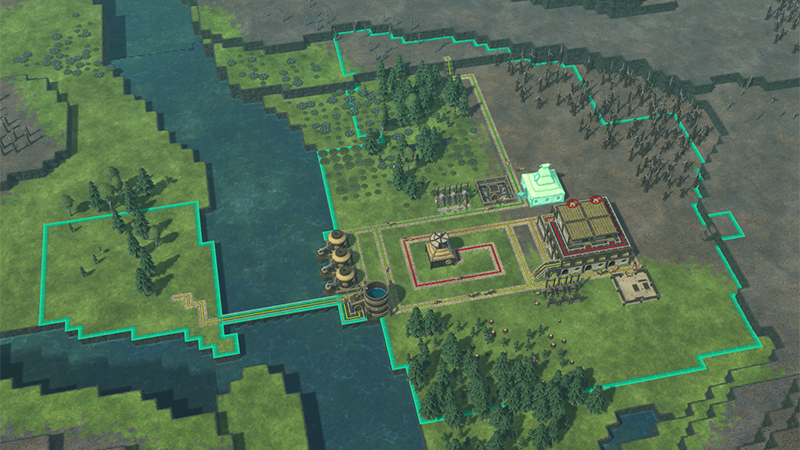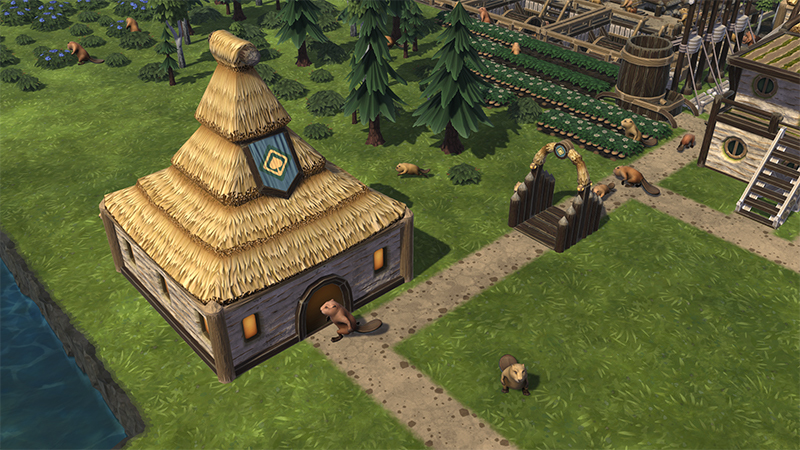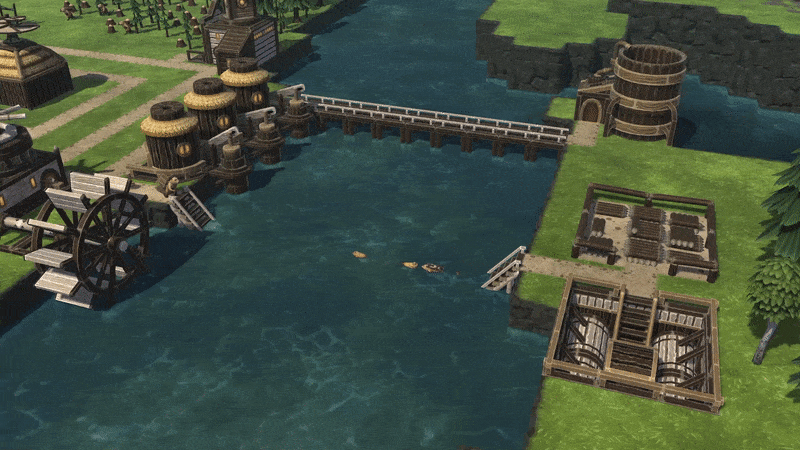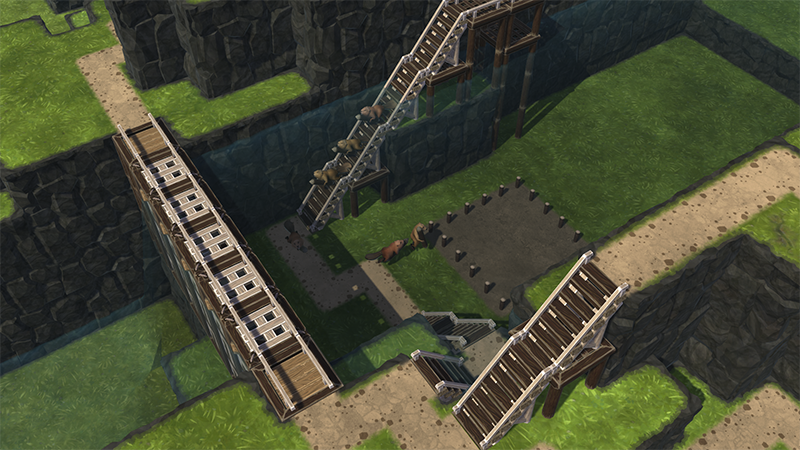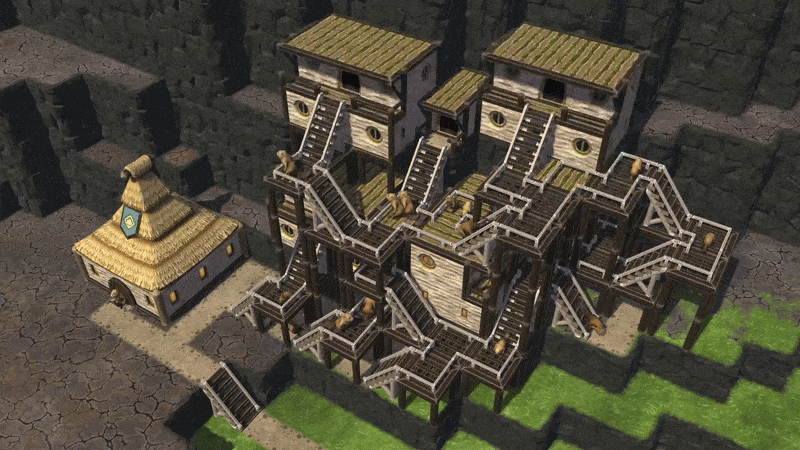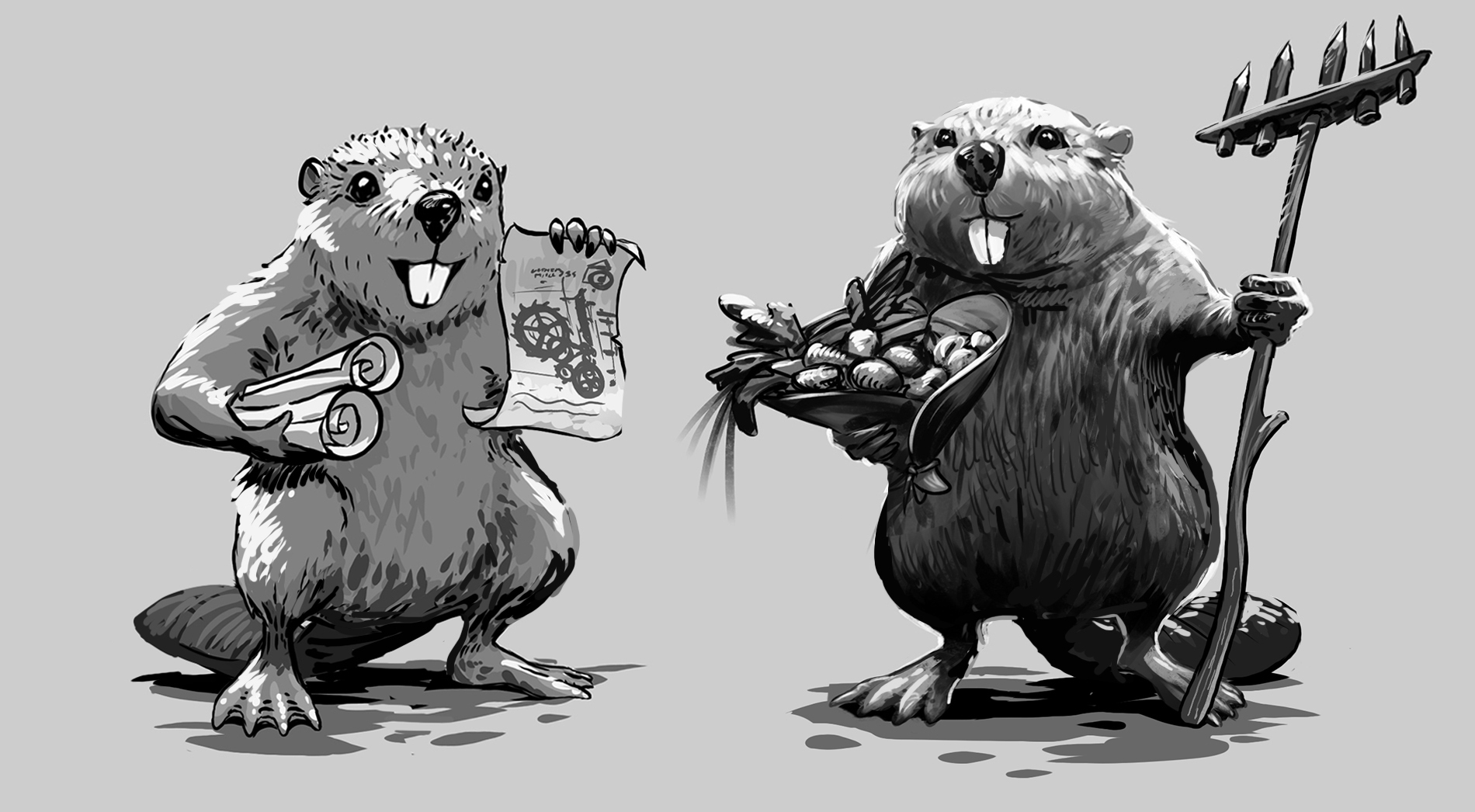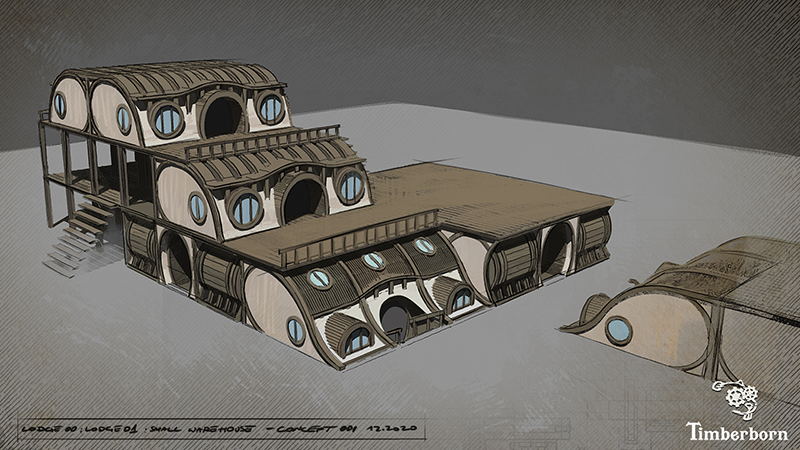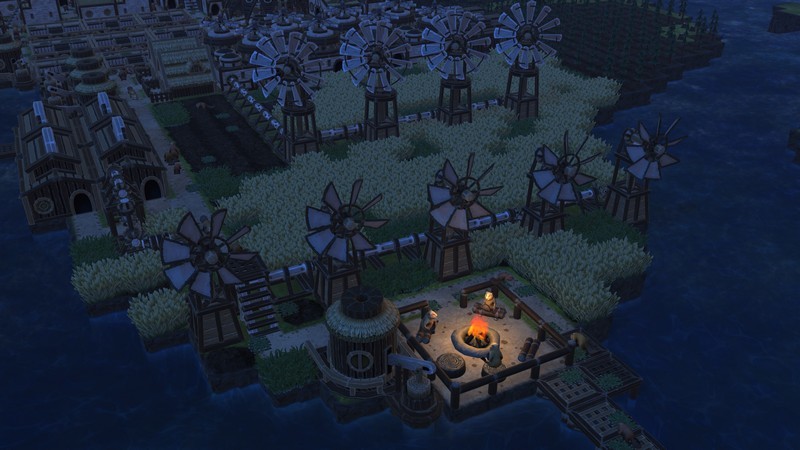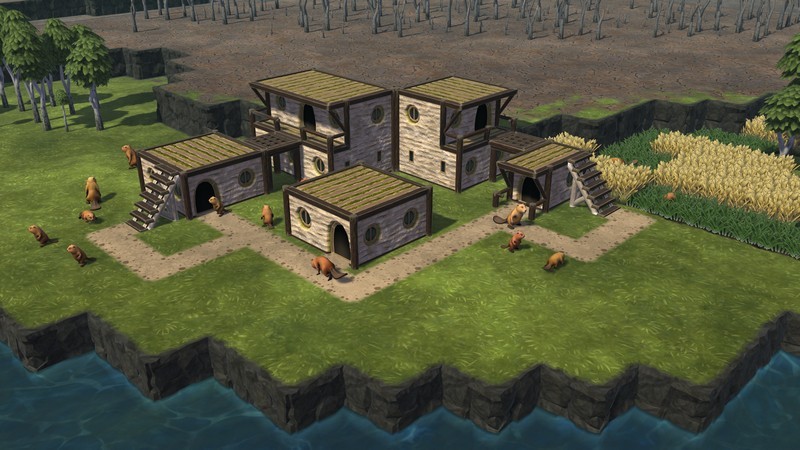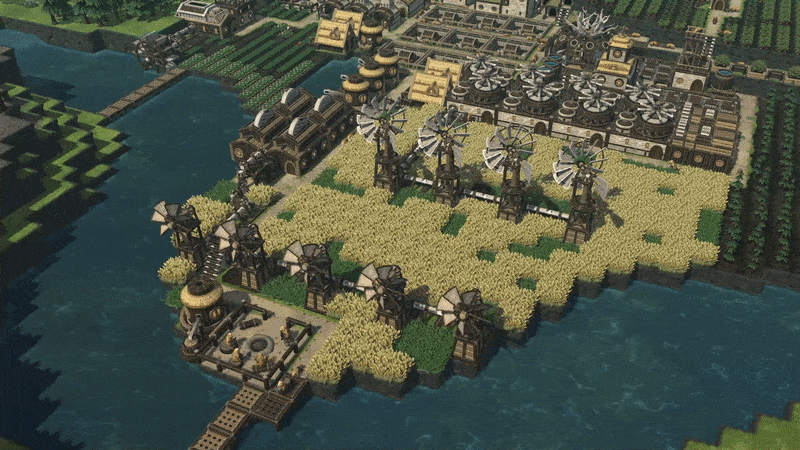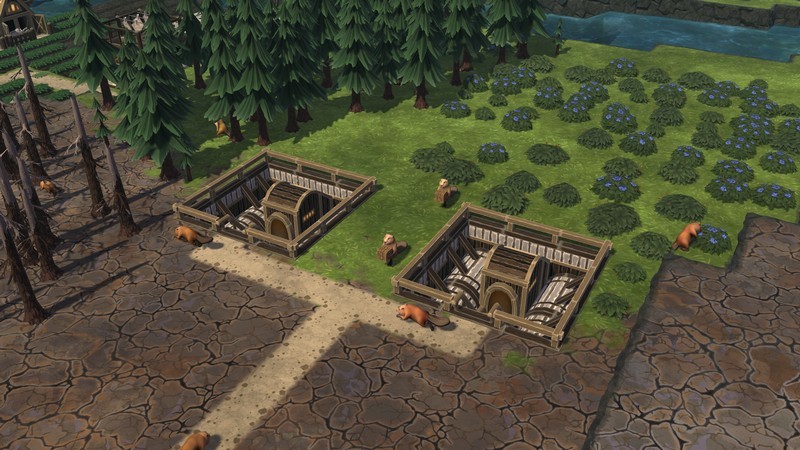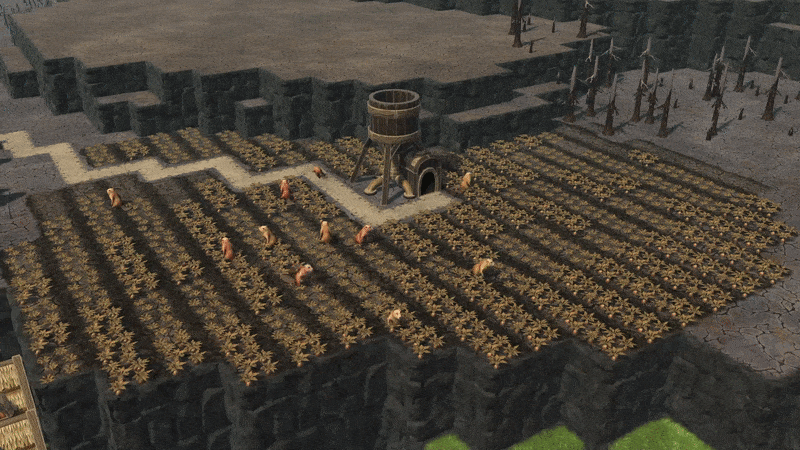
Sep 12, 2021
Timberborn - Miami_Mechanistry
Hey everyone!
One of the reasons Timberborn encourages vertical architecture – which we previewed yesterday – is the need for efficient space management. We kept that in mind while designing the Early Access maps. But what if you'd rather play on a map that’s as flat as a pancake? Or on an area completely covered with jagged cliffs? Well, fire up the map editor and find that out.
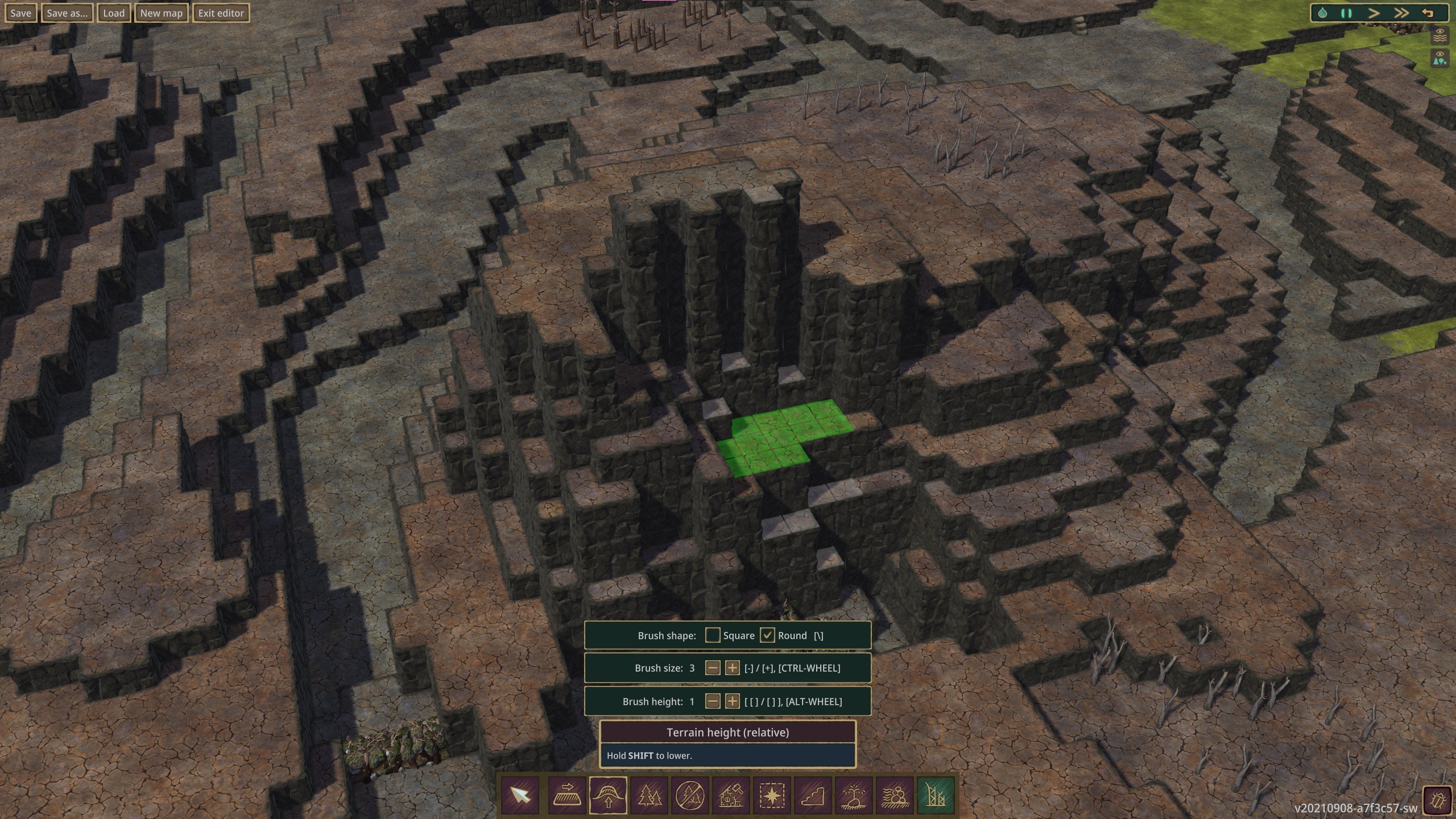
The in-game map editor is the same tool we use to create Timberborn maps. Over the course of the game’s development, we have prepared – and scrapped – many levels, and now so can you. The best thing is that once you’re done, sharing the map with others is a matter of copying a file.
The map editor is accessed via the main menu. You can create a new map – just pick a custom map size and you’ll be thrown onto an empty, rather depressing wasteland that needs your creative touch. Thanks to the magic of the terrain-altering brushes you will be able to shape it down to a voxel. Changing the map’s heights is the main job here but keep the future waterways in the back of your mind.
If you want your map’s denizens to survive, you will need to set up water source blocks and choose appropriate water strength. Then you can just run the simulation to see how water behaves, where it spills uncontrollably, etc. You can pick spots for natural barriers and think of possible ways the player will play with water during both wet and dry seasons.
Or you can go crazy and build a madman’s test scene that makes it barely possible for the beavers to survive. Your call.
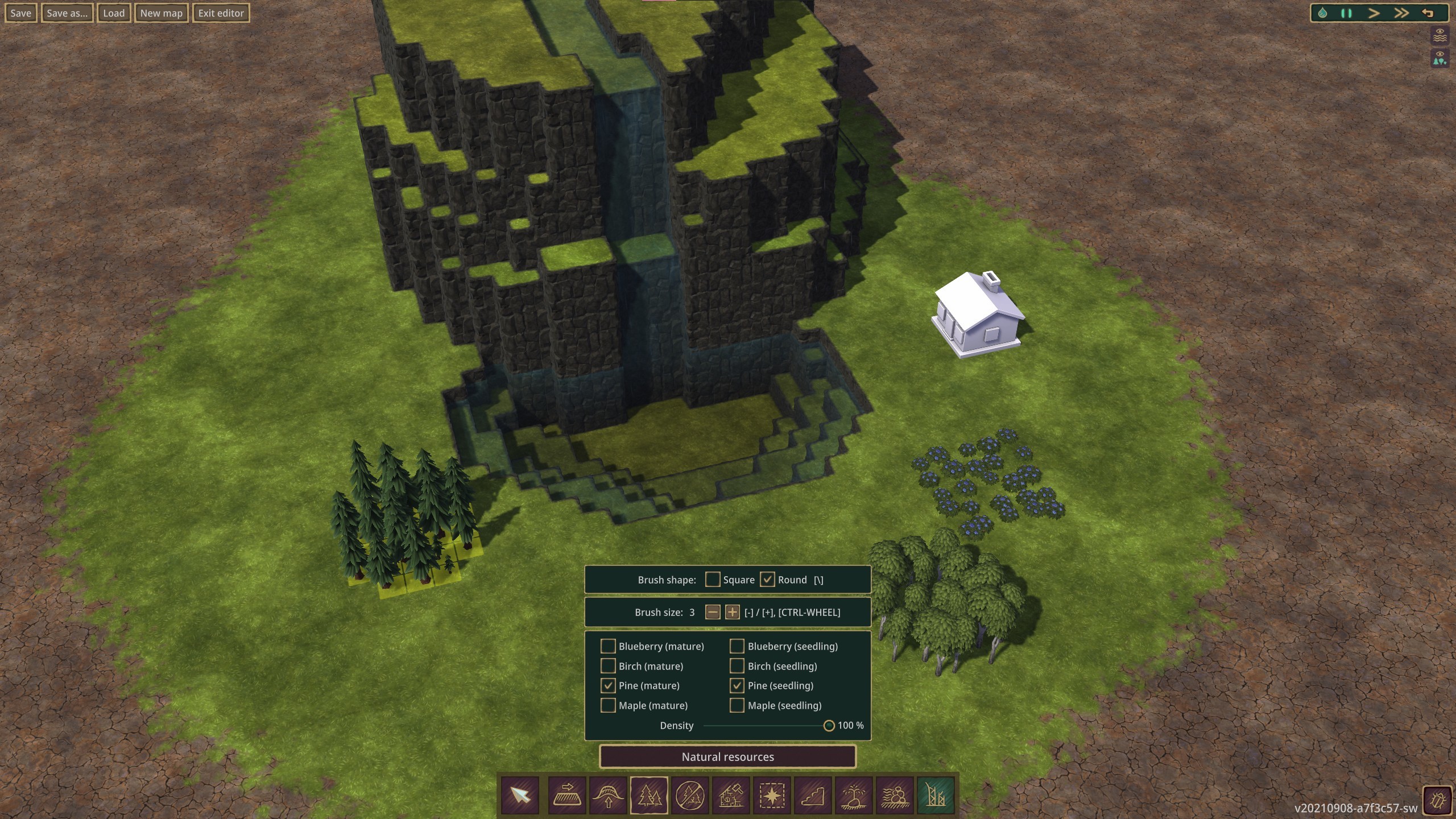
Either way, your finishing touches involve sprinkling trees and berries around the map as well as placing the clusters of human ruins. You have complete control over what you put on the map but you don’t need to place each pine sapling by hand – simply increase the brush size and choose a mixture of resources. Then, you just place the starting location – and that’s it!
An alternative to creating a brand new map is to pick any of the existing maps included by us or a community creation. You can then edit it in a similar fashion.
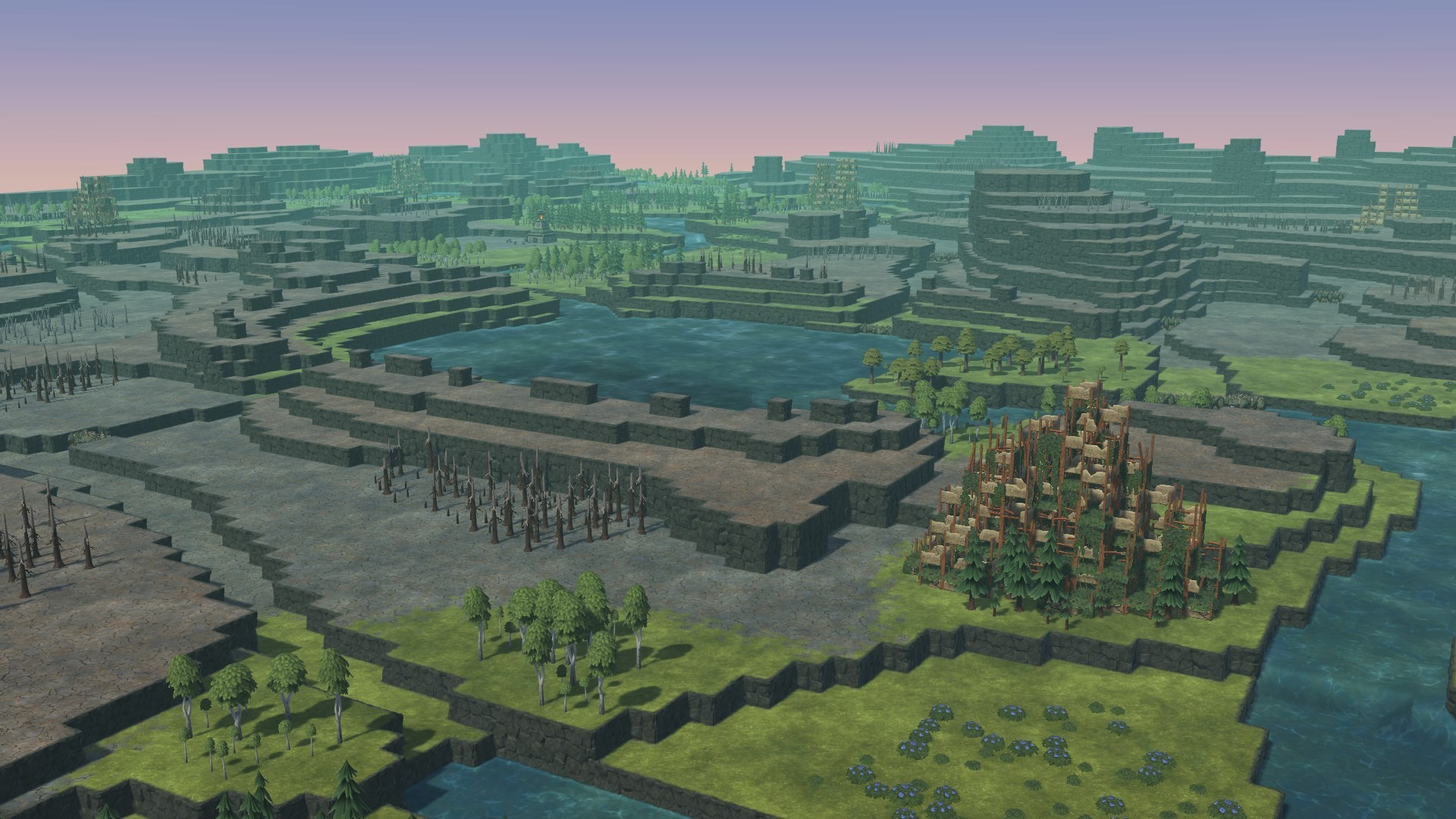
Regarding the maps we have included in the game: when you download Timberborn’s early access version, it will come with 9 maps created by us. Each of them is designed to be a different challenge.
We want you to have an element of surprise when Early Access hits on the 15th, so we won’t show them all. But here’s a recap:
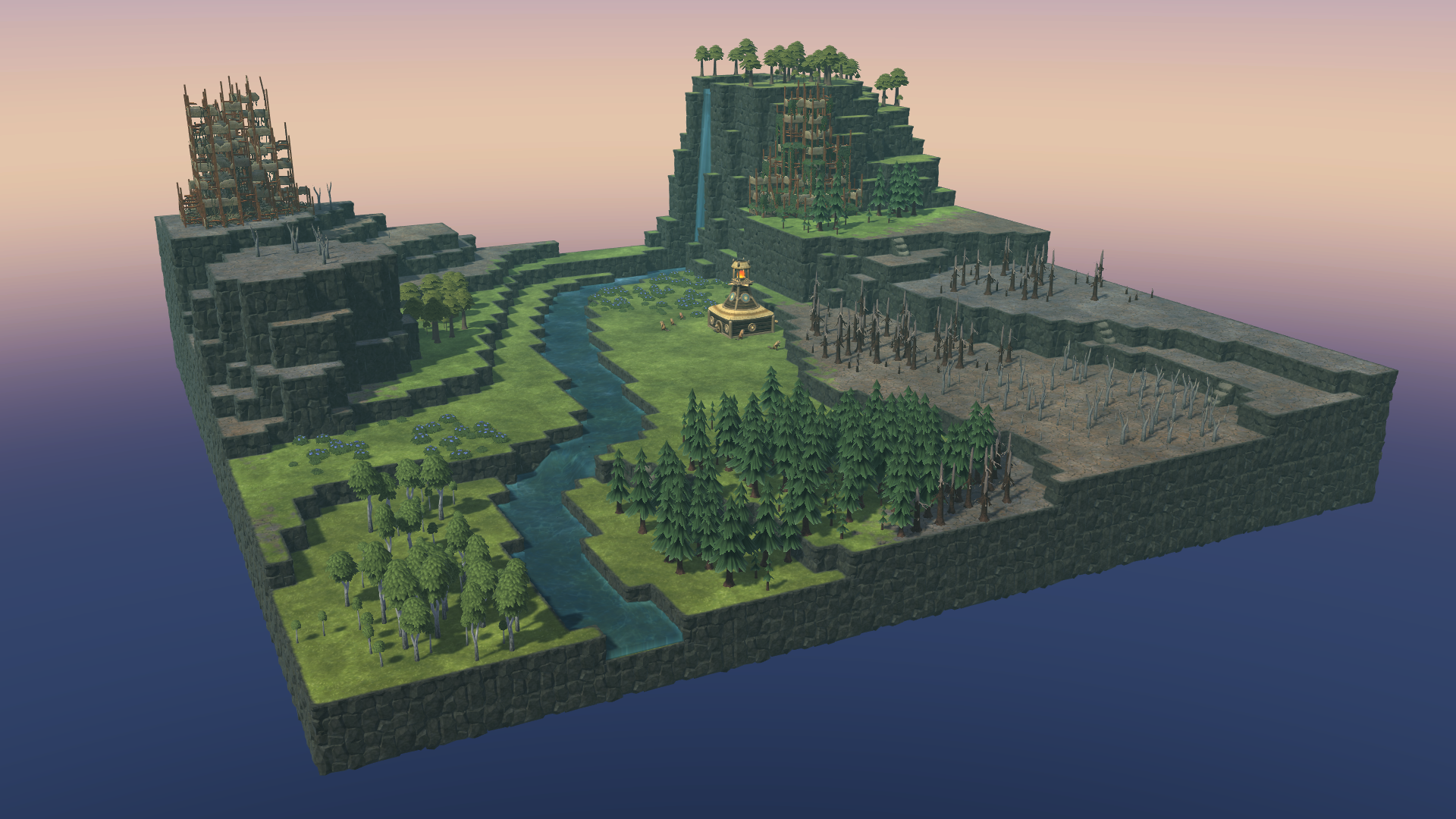
What kind of map would YOU like to grow your colony on when Early Access begins?
Remember that our Discord has a section where Timberborn players share all their creations. We have art, music, even puzzles — and starting with the 15th, custom maps will be there too!
One of the reasons Timberborn encourages vertical architecture – which we previewed yesterday – is the need for efficient space management. We kept that in mind while designing the Early Access maps. But what if you'd rather play on a map that’s as flat as a pancake? Or on an area completely covered with jagged cliffs? Well, fire up the map editor and find that out.
Map editor

The in-game map editor is the same tool we use to create Timberborn maps. Over the course of the game’s development, we have prepared – and scrapped – many levels, and now so can you. The best thing is that once you’re done, sharing the map with others is a matter of copying a file.
The map editor is accessed via the main menu. You can create a new map – just pick a custom map size and you’ll be thrown onto an empty, rather depressing wasteland that needs your creative touch. Thanks to the magic of the terrain-altering brushes you will be able to shape it down to a voxel. Changing the map’s heights is the main job here but keep the future waterways in the back of your mind.
If you want your map’s denizens to survive, you will need to set up water source blocks and choose appropriate water strength. Then you can just run the simulation to see how water behaves, where it spills uncontrollably, etc. You can pick spots for natural barriers and think of possible ways the player will play with water during both wet and dry seasons.
Or you can go crazy and build a madman’s test scene that makes it barely possible for the beavers to survive. Your call.

Either way, your finishing touches involve sprinkling trees and berries around the map as well as placing the clusters of human ruins. You have complete control over what you put on the map but you don’t need to place each pine sapling by hand – simply increase the brush size and choose a mixture of resources. Then, you just place the starting location – and that’s it!
An alternative to creating a brand new map is to pick any of the existing maps included by us or a community creation. You can then edit it in a similar fashion.
Maps

Regarding the maps we have included in the game: when you download Timberborn’s early access version, it will come with 9 maps created by us. Each of them is designed to be a different challenge.
We want you to have an element of surprise when Early Access hits on the 15th, so we won’t show them all. But here’s a recap:
- Plains is the classic map some of you might already know, with a lot of flat spaces and a big river going into a lake.
- Thousand Islands is filled with water and the challenge comes with going through it or blocking it to acquire more farmland.
- Likewise, Lakes gives you a lot of small spaces to put water through, irrigating a lot of land.
- Terraces is a very vertical map that starts you on a plateau with a small stream nearby and makes you go down, instead of up.
- Mountain Range is the newest map and slightly smaller than Terraces, but is somewhat similar — the water going out of the mountain you start on quickly falls into a ravine and doesn't irrigate that much land.
- Even smaller than that is Meander which features a single twisted river going around an elevated terrain the beavers start on.
- Waterfalls is another older map with a few waterfalls and a fairly flat terrain near the river after the falls.
- Canyon is the same valley with a small river that you've seen in the demo, with some small tweaks to make it easier to place bridges here and there.
- And Diorama is a tiny challenge map that makes your settlement look like a model village.

What kind of map would YOU like to grow your colony on when Early Access begins?
Remember that our Discord has a section where Timberborn players share all their creations. We have art, music, even puzzles — and starting with the 15th, custom maps will be there too!




